Photo
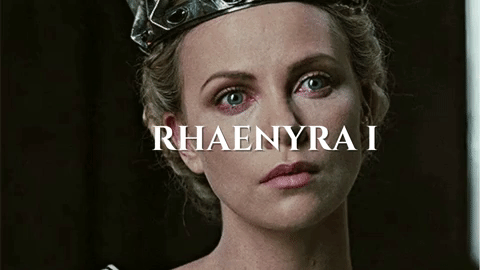


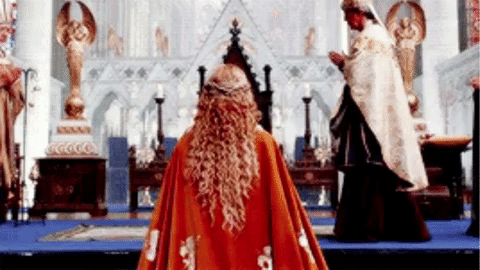




Rhaenyra I AU: Before Viserys I Targaryen’s death, this same Targaryen sent a letter four days before to his heir, Rhaenyra, asking her to come to be by his side before dying. Rhaenyra, still pregnant, flew on the back of her dragon Syrax to King’s Landing accompanied by her husband, Daemon, and their five children.
After a long agony King Viserys died in 129 A. C. accompanied by their relatives. Rhaenyra was saddened to lose her father, but she had the strength to prepare and be the new queen.
Three days later she went into labor, giving birth to her first daughter and her last child, Visenya. Rhaenyra was crowned in 129 A. C. as Rhaenyra I and her son Jacaerys Velaryon as her heir. The beginning of her government was not good, Alicent Hightower and the greens opine that she was the new queen, preferring Aegon, her half brother as king, in addition to the rumors of the doubtful paternity of her three older children.
The Hightower began a rebellion against Rhaenyra, crowning Aegon as Aegon II. Rhaenyra commanded her husband, Daemon Targaryen to stop these rebellions while she protected the town.
Her son Jacaerys advised his mother not to bring more fire and blood to the Seven Kingdoms, so Corlys Velaryon, her hand, was sent to Oldtown to make the peace offer by offering a compromise between Aegon, the younger, and the Aegon’s daughter, Jaehaera. Besides offering the island of Rocadragon and a large pension.
The clingy and lazy Aegon II accepted these conditions, setting aside the protests of the Dowager Queen Alicent Hightower and Criston Cole.
Rhaenyra’s reign went through some ups and downs due to the protests of some great lords who did not want their Velaryon children to be the heirs to the throne because of their bastardy. This issue caused that the first son of his second marriage, Aegon was seen as a better heir for his good behavior and his Valyrian appearance. Although this topic was avoided by Rhaenyra so as not to create conflicts between his two children.
Despite these problems, her reign was good thanks to her preparation as queen and her advisers, in addition to knowing how to keep the greens as limited as she could. She achieved some alliances with the Seven Kingdoms, promising her son Joffrey to Cerelle Lannister, sister of the Lord of Casterly Rock and her little Visenya to Joffrey Arryn, cousin and heir to Jeyne Arryn.
Her son Viserys traveled to Lys where he fell in love with an older girl named Larra Rogare and whom he married. This upset Rhaenyra and Daemon, as they already had an engagement for him with the Baratheron house, but in the end they reluctantly accepted this marriage.
She had problems with her husband Daemon and his rebellion, leading to heated arguments that turned to passion, but still Daemon was a great support for his wife and tried not to make her angry.
In her last days Rhaenyra spent time with her grandchildren and felt special affection for her grandson Aemon, son of Viserys and Larra, in addition to taking care of her granddaughter Naerys, who was very sickly.
In the end Rhaenyra died in 157 A. C. At age 60, the throne passed to her son Jacaerys, who had many problems during her reign.
152 notes
·
View notes
Photo


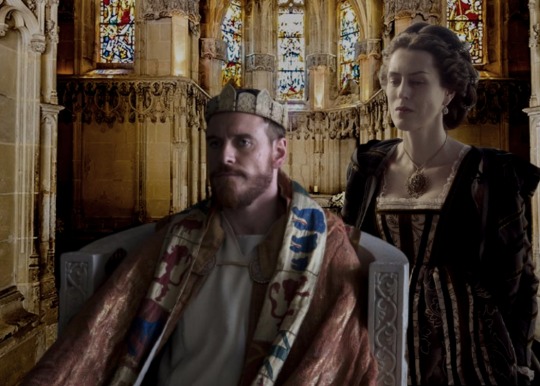
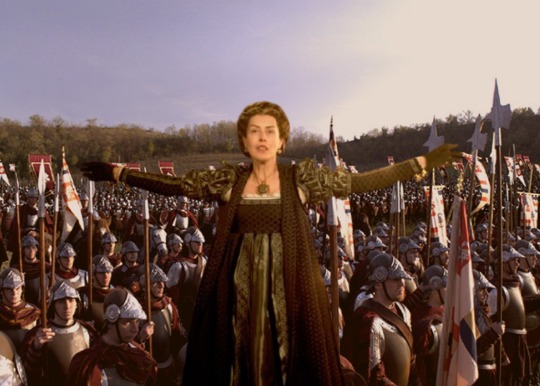





The frustrated widow Alicent Hightower AU: Alicent had remained at the side of her dying husband, Viserys I until his death. Unfortunately for her, the king managed to warn her daughter, Rhaenyra of her status and to return from Dragonstone to be by her side, this frustrated her plans to seat her first-born, Prince Aegon on the iron throne.
Three days before the coronation of Rhaenyra I, Alicent left for Oldtown with her children and her supporters to plan the rebellion that would become known as “The roar of the golden dragon” crowning her son Aegon.
The Greens were joined by the Baratheon to start the revolts at King’s Landing and overthrow their stepdaughter. Her son Aemond managed to besiege Harrenhal.
These attacks caused Rhaenyra to send her husband, Daemon Targaryen along with his army to stop those looting, the battles that the river lands were fought were victorious for the blacks thanks to Daemon and Corlys Velaryon.
After a year of complicated battles, Rhaenyra at the insistence of her son, Jacaerys, sent Corlys Velaryon to Oldtown to make a peace offer to Aegon II, if he gave up his attempts to get the throne, they would offer him the island of Dragonstone and a large pension with which they would lead a privileged lifestyle. In addition to marrying Princess Jaehaera to Rhaenyra and Daemon’s first son, Prince Aegon.
The dowager queen refused this offer:
“The Delight of the Kingdom took the throne of a king, the place of a man. It is the position that my son deserves by right and we are not going to bend for gold”.
However, her son gladly accepted this proposal, something that angered her mother and the Lord Commander of the Royal Guard, Criston Cole.
After signing the agreement “The Peace of the Dragon” Alicent went into exile in Oldtown with her minor children and grandchildren, where she spent the years in complete bitterness.
In the year 132 a. C. Alicent tried to crown her other son, Aemond and resume rebellions against the iron throne, but soon this only provoked the wrath of Rhaenyra who flew on her dragon Syrax to Oldtown, where she threatened her stepmother to feed her to she and her family to their dragons if he caused more trouble again.
The following years Alicent’s behavior became more erratic and bloody, criticizing her children for being weak in the face of pleasures, in addition to constantly pressuring Helaena with raising her grandchildren, Jaehaerys and Maelor as “future heirs.” The only thing that calmed her was reading the books she read to King Jaehaerys I, when he was in charge of her care.
At 46 years old, the widowed queen had lost that charm that characterized her, becoming a wrinkled and pale woman with a cold look, who only saw in mourning for the evident fall of her future as queen mother.
Her son, Daeron said these words:
“The more years passed the bitterness of my mother believed, the more she believed her bitterness the more beauty she lost.”
In the year 135 a. C. the ex-queen suffered an accident where she cut her hand with a kitchen knife. The wound was treated, but the blood continued to drip, Maester Alfador decided to bleed something that further weakened the queen, contracting puerperal fever.
Alicent died on the last day of 135 a. C. at 47 years of age while her daughter, Helaena held her hand. Her remains were buried in Oldtown, as Rhaenyra and Daemon refused to bury her in the crypts of King’s Landing after all the damage she caused.
62 notes
·
View notes
Photo



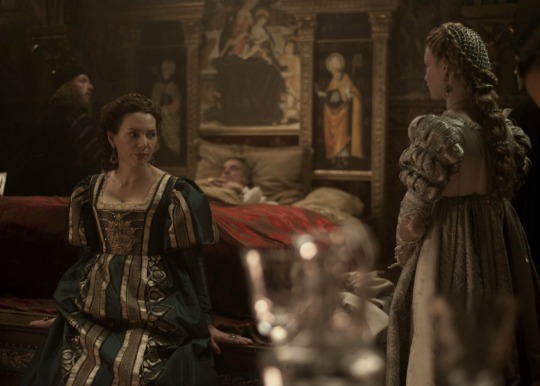




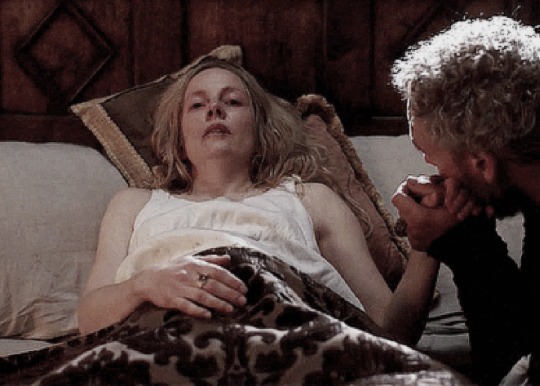
Princess Helaena, mother of a queen AU: Upon the death of her father, Viserys I Targaryen, her older half-sister, Rhaenyra, was crowned Rhaenyra I Targaryen.
Her mother forced her to go to Oldtown with the Greens and her brothers, where they planned a coup against the queen to put her brother-husband, Aegon on the iron throne.
This rebellion was put down by Daemon Targaryen and Corlys Velaryon, who brought an offer of peace with the alliance between his daughter, Jaehaera and Prince Aegon, the youngest. In addition, they were granted the island of dragon rock and a large pension to have a luxurious lifestyle, something that her husband accepted without thinking, despite the protests of his mother Alicent.
Helaena was almost secluded in the lighthouse, while her daughter Jaehaera was sent to King’s Landing to make the engagement official. For 4 years Helaena visited her daughter with her brothers, but she felt alone in Oldtown since her husband was involved in pleasures and lovers with the pension they were given, and her resentful mother always demanded her presence and her of his grandchildren.
In 135 A. C., the queen widow Alicent died of puerperal fever, her death affecting Helaena and her siblings. Knowing that her sweet sister was very lonely and sad, Rhaenyra decided to bring her to court with her children so that they could be by the side of Princess Jaehaera.
For the next several years, Helaena stayed with her children and stayed away from politics, focusing on sewing, riding her dragon dreamfyre, at court events.
She was by the side of her daughter Jaehaera when she became pregnant and gave birth to her first child, Aenar in 149 A. C.
The years passed quietly with her children and grandchildren who were reaching the world. Until in the year 156 A.C. her son, Jaehaerys died in a hunting accident, when she was pierced by an arrow in the eye.
The death of her son devastated her greatly, making her very ill. The princess spent a whole year in bed. Her husband, Aegon came from Lys to see how she was despite the time apart and his infidelities, having a good reunion sharing the pain of losing her eldest son. For the next several months Aegon stayed by his wife’s side until one morning from 157 A. C. Helaena never woke up again, dying two days before her 48th birthday.
That same year her son Maelor had an illegitimate daughter with a maid of honor from Jaehaera and named her “Helena” in honor of her late mother.
72 notes
·
View notes
Photo





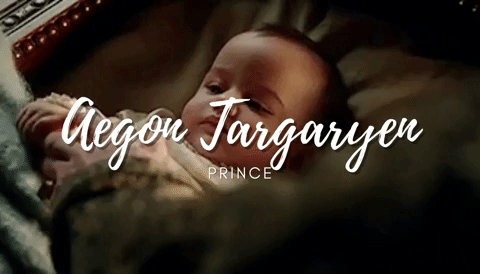

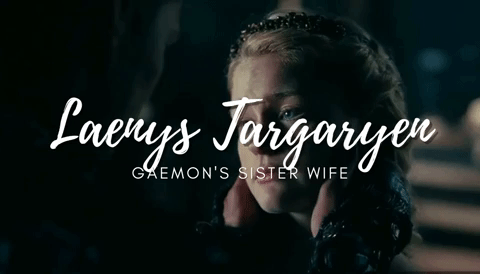
Daeron I and Daena “The Young Dragons” (2/?)
The couple focused on having children, they could have a total of seven children:
Visenya Targaryen (161 AC - 194 AC) was queen consort of the Seven Kingdoms by marrying her younger brother, Daemon I.
She was named in honor of Queen Visenya, Aegon I’s warrior sister. She was considered a cultured and more feminine girl as well as not being interested in sports at the time, bearing more resemblance to her aunt, Rhaena Targaryen.
Visenya struggled to stay on the treadmill with two stillborn children and three surviving children, Daella, Aegon future Aegon IV and Rhaella.
She passed away at the age of 33 after giving birth to a boy, Aenar.
Daenys Targaryen (162 AC - 204 AC) became Mistress of Harrenhal after marrying Manfryd Lothston.
She was considered sweet-looking and cuddly, her personality was insightful, accommodating, and somewhat manipulative. During her marriage, he managed to make her husband surrender at her feet and despite her bad behavior, Manfryd was infatuated with her wife.
Daenys had four children with her husband and it was she who took care of her, in addition to getting important marriages for them. The masters said that Daenys “looked after her children in the Hall of the Hundred Chimneys and looked after her husband in the bedroom.”
Daenys passed away in AC 211. C., at 49 years of age due to the fact that she contracted puerperal fever in winter after a walk in the snow.
Daemon I Targaryen (163 AC -209 AC) was king of the Seven Kingdoms from 187 A. C. to the year 209. He was married to his older sister, Visenya and their marriage was happy since both felt attraction and affection despite being different. Although he is said to have had extramarital affairs with some prostitutes and one of them became pregnant with a child, Gaeron was white.
His reign was characterized by sudden climatic changes in the Seven Kingdoms, something that was hardly seen, he also managed to establish some alliances with the Greyjoy to have his favor by marrying his daughter, Rhaella with Torwyn Greyjoy.
After Visenya’s death, Daemon sank into grief and considered abdicating, but he did not do so for the sake of his son Aegon. Daemon ended up dying in the year 219 at the age of 46, a victim of smallpox and was succeeded by his son Aegon.
Daenaera Targaryen (164 AC-236 AC) became mistress of Driftmark by marrying her cousin, Corlys Velaryon, the son of her uncle Alyn Velaryon.
She was considered the most beautiful daughter of Daeron and Daena, she being compared to her grandmother the dowager queen Daenaera Velaryon. She was smiling and loved nature, as well as being an excellent dancer and party lover.
Little is known about her married life, but it is known that she had two children who were the next successors to Driftmark.
She outlived her husband for ten years, who died in 226 and Daenaera passed away at 72 years of age.
Aegon Targaryen (166 AC -167 AC) passed away within the first day of his name.
Gaemon Targaryen (167 AC-208 AC) known as “King Maegor II” was a member of the City Guard and for a time heir to his brother Daemon I.
He was considered a somewhat cold, war-loving and somewhat cruel boy being compared to King Maegor I. According to his own brothers, he was cold and sometimes aggressive towards others, but he was very in love and passionate with his sister wife, Laenys with which I have ten children.
In the year 199 he was widowed when Laenys died after giving birth to her last child, Daeron and his death psychologically affected Gaemon, becoming more aggressive and paranoid, coming to believe that someone poisoned his wife. Gaemon’s behavior was such that Daemon I had to lock his own brother in a room in Maegor’s Keep.
In his quarters, Gaemon used to spend his days breaking everything within his reach, screaming and suffering from several fits of anger, even mistreating several of his servants.
In the year 208 AC., Gaemon had a madness attack and crashed his head against a wall, splitting his skull, dying instantly. The prince died at the age of 41 and his ashes were buried next to those of his beloved Laenys.
Laenys Targaryen (169 AC-192 AC) was the beloved wife of her brother Gaemon Targaryen and mother of the future queen, Saera Targaryen who married her cousin, Aegon IV.
She was considered a less handsome girl than her older sisters, but she had a certain charm thanks to her sweet, cheerful and submissive personality.
She was very close to her brothers, but especially to her brother Gaemon hers, who had several nervous attacks and only Laenys could appease thanks to her character.
At the age of 15, she thought of marrying her to Lord Rodwell Stark, but her brother Gaemon hers refused and wanted to marry her little sister himself. Although at first her father did not agree at all, in the end she accepted due to the closeness of her brothers and that same year Laenys and Gaemon were married.
The couple had a great passion for each other and went on to conceive ten children, but only six would reach adulthood. Laenys’ continuous childbirth caused her health to begin to decline because each delivery only took one or two years. In the year 199 d. C., she had her last child, Daeron, but this birth left the princess very weak and she died three days after her delivery at the age of 31.
La pareja se centro en tener hijos pudieron tener en total siete hijos:
Visenya Targaryen (161 d. C.- 194 d. C.) fue reina consorte de los Siete Reinos al casarse con su hermano menor, Daemon I.
Fue nombrada en honor a la reina Visenya, la hermana guerrera de Aegon I. Era considerada una muchacha culta y mas femenina además de no estar interesada en los deportes de la época, teniendo mas parecido con su tía, Rhaena Targaryen.
Visenya tuvo complicaciones para quedarse en cinta teniendo dos hijos que nacieron muertos y tres niños supervivientes, Daella, Aegon futuro Aegon IV y Rhaella.
Falleció a la edad de 33 años tras dar a luz a un niño, Aenar Targaryen.
Daenys Targaryen (162 d. C.- 204 d. C.) fue señora de Harrenhal tras casarse con Manfryd Lothston.
Era considerada de aspecto dulce y tierno, su personalidad era perspicaz, complaciente y algo manipuladora. Durante su matrimonio logró que su marido estuviera rendido a sus pies y pesé a su mal comportamiento Manfryd estaba encaprichado con su mujer.
Daenys tuvo cuatro hijos con su marido y fue ella quien se encargo de sus cuidados, además de conseguir matrimonios importantes para estos. Los maestres decían que Daenys “cuidaba a sus hijos en la Sala de las Cien Chimeneas y cuidaba a su marido en la alcoba”.
Daenys falleció en el año 211 d. C., a los 49 años debido a que en invierno contrajo fiebres puerperales después de un paseo por la nieve.
Daemon I Targaryen (163 d. C. -219) fue rey de los Siete Reinos desde el año 189 d. C. al año 220. Fue casado con su hermana mayor, Visenya y su matrimonio fue feliz ya que ambos sentían atracción y cariño pese a ser distintos. Aun que según se dice tuvo relaciones extramatrimoniales con algunas prostitutas y una de ellas quedo embarazada de un niño, Gaeron fuegoblanco.
Su reinado se caracterizo por los repentinos cambios climáticos en los Siete Reinos, algo que casi no se veía, además también logró establecer algunas alianzas con los Greyjoy para tener su favor casando a su hija, Rhaella con Torwyn Greyjoy.
Tras la muerte de Visenya, Daemon se sumió en una pena y pensó en abdicar, pero no lo hizo por el bien de su hijo Aegon. Daemon acabo falleciendo en el año 219 a los 53 años victima de la viruela y fue sucedido por su hijo Aegon.
Daenaera Targaryen (164 d. C. - 236 d. C.) fue señora de Marcaderiva al casarse con su primo, Corlys Velaryon, hijo de su tío Alyn Velaryon.
Era considerada la hija mas bella de Daeron y Daena, siendo comparada con su abuela la reina viuda Daenaera Velaryon. Era sonriente y amaba la naturaleza, además de ser una excelente bailarina y amante de las fiestas.
Poco se sabe sobre su vida conyugal, pero se sabe que llegaron a tener dos hijos que fueron los siguientes sucesores de Marcaderiva.
Ella sobrevivió a su marido por diez años, quien pudo fallecer en el año 226 y Daenaera falleció a los 72 años de edad por vejez.
Aegon Targaryen (166 d. C. -167 d. C.) falleció antes de cumplir su primer día del nombre.
Gaemon Targaryen (167 d. C. - 208 d. C.) conocido como “Rey Maegor II” fue miembro de la Guardia de la Ciudad y por un tiempo heredero de su hermano Daemon I.
Era considerado como un chico algo frío, amante de la guerra y algo cruel siendo comparado con el rey Maegor I. Según sus propios hermanos, el era frío y a veces agresivo con otros, pero se mostraba muy enamorado y apasionado con su hermana esposa, Laenys con la cual llego a tener diez hijos.
En el año 199 enviudo cuando Laenys falleció tras dar a luz a su ultimo hijo, Daeron y su muerte afecto psicológicamente a Gaemon volviéndose mas agresivo y paranoico, llegando a creer que alguien enveneno a su esposa. El comportamiento de Gaemon fue tal que Daemon I tuvo que encerrar a su propio hermano en un cuarto del Torreón de Maegor.
En sus aposentos Gaemon solía pasar los días rompiendo todo a su alcance, gritando y padeciendo de varios ataques de ira llegando a maltratar a varios de los sirvientes.
En el año 208 d. C., Gaemon tuvo un ataque de locura y estrello su cabeza contra un muro partiéndose el cráneo falleciendo al instante. El príncipe falleció con 41 años y sus cenizas fueron enterradas junto a las de su amada Laenys.
Laenys Targaryen (169 d. C. - 192 d. C.) fue la amada esposa de su hermano Gaemon Targaryen y madre de la futura reina, Saera Targaryen la cual se caso con su primo, Aegon IV.
Era considerada una muchacha menos agraciada que sus hermanas mayores, pero tenia cierto encanto gracias a su personalidad dulce, alegre y sumisa.
Era muy cercana a sus hermanos, pero sobre todo a su hermano Gaemon, el cual tenia varios ataques de nervios y solo Laenys podía apaciguar gracias a su carácter.
A los 15 años se pensó en casarla con Lord Rodwell Stark, pero su hermano Gaemon se negó y quiso casarse el mismo con su hermana pequeña. Aun que al principio su padre no estaba del todo de acuerdo, al final acepto debido a la gran cercanía de los hermanos y ese mismo año Laenys y Gaemon se casaron.
La pareja sentía una gran pasión el uno por el otro y llegaron a concebir diez hijos, pero solo seis llegarían a edad adulta.
Los continuos parto de Laenys provocaron que su salud empezara a decaer debido a que por cada parto solo pasaban uno o dos años. En el año 199 d. C., tuvo a su ultimo hijo, Daeron, pero este parto dejo muy débil a la princesa y murió tres días después del alumbramiento a los 31 años.
94 notes
·
View notes
Photo




The royal couple traveled north for the mysterious disappearances of cadets of the Night’s Watch.
On the day of the expedition, Daena got sick with the flu and had to stay in bed while Daeron went on the expedition. The king said goodbye to his wife with a kiss on the forehead and with the phrase “goodbye”, but what they did not know was that this would be the last kiss and the last words of Daeron towards Daena.
Daeron I died in 187 A. C. at the age of 44 two days after marching towards that supposedly hypothermic expedition. The queen cried bitterly when she saw how they brought the corpse of her husband wrapped in her and she had a fit of anger screaming that the Night’s Watch murdered Daeron to offer it to the King of the Night.
The queen returned to King’s Landing with the retinue that were moving the body of her husband. Upon reaching the capital Daena took refuge in the arms of his sons Visenya, Daemon and Laenys.
During the king’s funeral, Daena made a large scar on her face that started from the right side of her mouth to her cheekbone, saying these words:
“I don’t want anyone else to look at me the way he looked at me.”
In the following years, no more was heard of her widowed queen, she was only seen at the coronation of her children Daemon I and Visenya as kings of the Seven Kingdoms, and during the birth of her grandson Daeron in the year 192 A. C. That same year her youngest daughter, Laenys, died shortly after giving birth to Daeron and this death destroyed Daena, falling ill and sinking into a great depression.
At the beginning of the year 193 A. C., the widowed queen died at 48 years of age due to high fever and her ashes rest next to those of her husband, Daeron I.
La pareja real viajo hacia el norte por las misteriosas desapariciones de cadetes de la Guardia de la Noche.
El día de la expedición, Daena enfermo de gripe teniendo que permanecer en cama, mientras Daeron iba a la expedición. El rey se despidió de su esposa con un beso en la frente y con la frase “adiós”, pero lo que no sabían era que ese iba a ser el ultimo beso y las ultimas palabras de Daeron hacia Daena.
Daeron I falleció en el año 187 d. C. a los 44 años dos días después de marchar hacia aquella expedición supuestamente de hipotermia. La reina lloro amargamente al ver como traían el cadáver de su marido envuelto y tuvo un ataque de ira gritando que los de la Guardia de la Noche asesinaron a Daeron para ofrecerlo al Rey de la Noche.
La reina volvió a Desembarco del rey junto a la comitiva que trasladaban el cadáver de su marido. Al llegar a la capital Daena se refugio en los brazos de sus hijos Visenya, Daemon y Laenys.
Durante el funeral del rey, Daena se hizo una gran cicatriz en la cara que empezaba desde el lado derecho de su boca hasta el pómulo pronunciando estas palabras:
“No deseo que nadie mas me mire como el me miraba”.
En los años siguientes no se supo mas de la reina viuda siendo solo vista en la coronación de sus hijos Daemon I y Visenya como reyes de los Siete Reinos, y durante el nacimiento de su nieto Daeron en el año 192 d. C.. Ese mismo año falleció su hija pequeña, Laenys poco después de dar a luz a Daeron y esta muerte destrozo a Daena cayendo enferma y sumiéndose en una gran depresión.
A principios del año 193 d. C., la reina viuda falleció con 48 años de edad por altas fiebres y sus cenizas reposan al lado de las de su esposo, Daeron I.
31 notes
·
View notes
Photo






Daeron I and Daena “The Young Dragons” (1/?)
After Daeron’s coronation as Daeron I in 157 a. C., his uncle Viserys decided to find a wife for the king and thus have the offspring of him, but Daeron was more focused on conquering Dorne and annexing it to the seven kingdoms.
Daeron was always close to her younger sister, Daena and she admired her brother, but little by little that admiration turned into desire and the princess wanted to marry her brother despite being destined to marry her. another brother of hers, Baelor.
In the year 159 a. C., Daena (aged 14) broke into her brother’s rooms where she managed to seduce him and get into her bed. The prince, having deflowered her sister, was now forced to marry her, although this did not discourage him and he agreed to marry Daena.
In the year 160 a. C., the wedding was celebrated and Daena was crowned as queen consort of the Seven Kingdoms. Much was said about the passionate encounters between the couple and the hunting parties they often went on.
It is also known that due to Daena’s rebellious nature, both had some disputes over her behavior, but these discussions ended with passionate encounters.
Daeron was fortunate he had a very passionate wife with whom he shared time and bed, as well as conquering Dorne, but in 161 a. C., the Dornienses betrayed him and rebelled, killing more than forty thousand men.
The king was willing to fight on the battlefield because of the insolence of the rebels, but his brother Baelor convinced him to make peace in the least bloody way, being Baelor himself who would go to Dorne to make a pilgrimage in that way by signing the peace with the Martells, in addition to promising the eldest son of his cousins Aemon and Naerys, Daeron with the daughter of the Prince of Dorne.
Tras la coronación de Daeron como Daeron I en el año 157 d. C., su tío Viserys decidió buscar una esposa para el rey y de esa manera tener su descendencia, pero Daeron estaba mas centrado en conquistar Dorne y anexarlo a los siete reinos.
Daeron siempre estuvo unido a su hermana menor, Daena y esta admiraba a su hermano, pero poco a poco esa admiración se fue convirtiendo en deseo y la princesa deseaba casarse con su hermano pese a estar destinada a casarse con su otro hermano, Baelor.
En el año 159 d. C., Daena (con 14 años) irrumpió en las habitaciones de su hermano donde logro seducirlo y meterse en su lecho. El príncipe al haber desvirgado a su hermana ahora estaba forzado a casarse con ella, aun que esto no lo desanimo y acepto casarse con Daena.
En el año 160 d. C., se celebro la boda y Daena fue coronada como reina consorte de los Siete Reinos. Se decía mucho sobre los encuentros apasiónales entre la pareja y las partidas de caza que hacían a menudo.
También se sabe que debido al carácter rebelde de Daena, ambos tuvieron algunas disputas por su comportamiento, pero estas discusiones terminaban con encuentros apasionados.
Daeron era dichoso tenia una esposa muy apasionada con la cual compartía el tiempo y la cama, además de lograr conquistar Dorne, pero en el año 161 d. C., los Dornienses lo traicionaron y se rebelaron, acabando con la vida de mas de cuarenta mil hombres.
El rey estaba dispuesto a luchar en el campo de batalla por la insolencia de los rebeldes, pero su hermano Baelor lo convenció de hacer la paz de la manera menos sangrienta siendo el mismo Baelor quien iría a Dorne a hacer un peregrinaje de esa manera firmando la paz con los Martell, además de prometer al hijo mayor de sus primos Aemon y Naerys, Daeron con la hija del príncipe de Dorne.
41 notes
·
View notes
Photo








𝕍𝕒𝕖𝕘𝕠𝕟 𝕋𝕒𝕣𝕘𝕒𝕣𝕪𝕖𝕟 (𝟞𝟛 𝕒. ℂ.-𝟙𝟙𝟘 𝕒. ℂ.) 𝔸𝕣𝕔𝕙𝕚𝕞𝕒𝕖𝕤𝕥𝕣𝕖 𝕪 𝔼𝕤𝕔𝕣𝕚𝕥𝕠𝕣
Vaegon Targaryen fue el hijo mas desconocido de Jaehaerys I y Alysanne Targaryen, debido a que era un joven frío, solitario y con pocos intereses en la vida siendo considerado como un príncipe aburrido y poco amigable.
El príncipe no sentía ningún interés por la milicia y tampoco por las mujeres pese a que en un principió se pensó en comprometerlo con su hermana Daella Targaryen, pero tras Vaegon humillar a su hermana durante una cena se decidió que ambos no se casarían.
En 78 d.C., el rey Jaehaerys y la reina Alysanne preguntaron al Gran Maestre Elysar si Vaegon tenía inclinación para convertirse en maestre. Aunque el Gran Maestre contestó firmemente que "no", confesó que Vaegon podría tener lo que se necesita para convertirse en un archimaestre. Como tal, tres días después, Vaegon fue convocado por el rey Jaehaerys, donde se le dijo que tomaría el barco hacia Antigua dentro de quince días.
Se sabe que Vaegon fue recibido por su hermana Maegelle Targaryen que era Septa en Antigua y se decía que ambos mantuvieron una relación cordial, siendo la princesa septa la única que era cercana al príncipe.
En la Ciudadela de Antigua, Vaegon se convertiría en un archimaestre, portando el anillo, el báculo y la máscara de oro amarillo. Aunque en ocasiones le escribía a sus padres, sus palabras eran cordiales pero no había calidez en las cartas.
El príncipe no fue bien aceptado por algunos de sus compañeros debido a su comportamiento y su poco tacto al hablar, aun que se dice que tenia una buena mano para la alquimia, la astrología y las matemáticas e incluso se dice que empezó a escribir las primeras paginas para un libro.
Al final Vaegon terminaría su primer libro llamado “La oscuridad y la alquimia” haciendo una critica directa sobre los elementos naturales, además de hablar de las propiedades del fuego que extinguió Valyria afirmando que no se trataba de una maldición sino de un accidente.
Su libro fue criticado por los maestres de su tiempo e incluso se dice que el rey Jaehaerys I quedo decepcionado con la forma de pensar tan arraigada y poco santa de su hijo. Aun que se dice que estos escritos le ganaron cierta fama entre sus compañeros que llegaron a admirar sus estudios.
En el 90 d. C., Vaegon acepto viajar junto a su hermano Baelon a Invernalia para negociar la liberación de su hermana menor, Viserra Targaryen que había quedado viuda de Theomore Manderly.
Durante su estancia en el Norte el archimaestre escribió su obra maestra conocida como “El invierno de la Muerte” donde relataba las inmensas temperaturas que se vivían allí y sobre las bajas temperaturas que hacían en el Muro. Su libro fue bien apreciado y se llego a ganar cierta popularidad en Invernalia y en la Ciudadela.
Poco mas se sabe de la vida de Vaegon aun que se cree que siguió ejerciendo su trabajo como archimaestre por el resto de su vida y escribió unos cuantos libros mas, siendo uno de ellos su autobiografía conocida como “El Sindragón”.
En cierto punto Vaegon fue considerado como el Padre de la Alquimia moderna gracias a sus numerosos descubrimientos sin descanso y a sus dos exitosos libros.
Debido a sus largas jornadas de trabajo y a los pocos descansos, Vaegon acabaría enfermando gravemente y padecía de varios ataques de tos. Al final quedo postrado en una cama donde lo único que podía hacer era quejarse por su gran debilidad y se llego a creer que padecía de gota.
Al final Vaegon Targaryen “El Sindragón” acabaría falleciendo en el 110 d. C., a los 47 años de edad debido a su extrema debilidad y se dice que fue acompañado por su hermana Maegelle Targaryen la única compañía que le quedaba.
𝕍𝕒𝕖𝕘𝕠𝕟 𝕋𝕒𝕣𝕘𝕒𝕣𝕪𝕖𝕟 (𝟞𝟛 𝕒. ℂ-𝟙𝟙𝟘 𝕒. ℂ) 𝔸𝕣𝕔𝕙𝕞𝕒𝕖𝕤𝕥𝕖𝕣 𝕒𝕟𝕕 𝕎𝕣𝕚𝕥𝕖𝕣
Vaegon Targaryen was the most unknown son of Jaehaerys I and Alysanne Targaryen, because he was a cold, lonely young man with few interests in life being considered a boring and unfriendly prince.
The prince did not feel any interest in the militia and neither in women, although at first it was thought of engaging him with his sister Daella Targaryen, but after Vaegon humiliated his sister during a dinner it was decided that both would not be would marry.
In 78 a. C., King Jaehaerys and Queen Alysanne asked Grand Master Elysar if Vaegon was inclined to become a master. Although the Grand Master firmly answered "no", he confessed that Vaegon might have what it takes to become an Archmaster. As such, three days later, Vaegon was summoned by King Jaehaerys, where he was told that he would take the ship to Oldtown within fifteen days.
It is known that Vaegon was greeted by his sister Maegelle Targaryen who was a Septa in Oldtown and the two were said to have a cordial relationship, the Septa princess being the only one who was close to the prince.
In the Citadel of Oldtown, Vaegon would become an archmasters, wearing the yellow gold ring, staff, and mask. Although he sometimes wrote to his parents, his words were cordial but there was no warmth in the letters.
The prince was not well accepted by some of his companions due to his behavior and his little tact when speaking, although it is said that he had a good hand for alchemy, astrology and mathematics and it is even said that he began to write the first pages for a book.
In the end Vaegon would finish his first book called "Darkness and Alchemy" by making a direct criticism of the natural elements, in addition to talking about the properties of the fire that extinguished Valyria, stating that it was not a curse but an accident.
His book was criticized by the masters of his time and it is even said that King Jaehaerys I was disappointed with the deeply ingrained and unholy way of thinking of his son. Although it is said that these writings earned him a certain fame among his colleagues who came to admire his studies.
In 90 a. C., Vaegon agreed to travel with his brother Baelon to Winterfell to negotiate the release of his younger sister, Viserra Targaryen, who had become Theomore Manderly's widow.
During his stay in the North, the archimaestre wrote his masterpiece known as "The Winter of Death" where he recounted the immense temperatures that were lived there and about the low temperatures that were in the Wall. His book was well appreciated and gained some popularity in Winterfell and the Citadel.
Little else is known about Vaegon's life, although it is believed that he continued to do his job as Archmaester for the rest of his life and wrote a few more books, one of them being his autobiography known as "The dragonless" .
At one point Vaegon was regarded as the Father of modern Alchemy thanks to his many relentless discoveries and his two successful books.
Due to the long working hours and the few breaks from him, Vaegon would end up becoming seriously ill and suffering from several coughing fits. In the end he was bedridden where the only thing he could do was complain about his great weakness and he came to believe that he suffered from gout.
In the end Vaegon Targaryen "The dragonless" would end up dying in 110 a. C., at 47 years of age due to his extreme weakness and it is said that he was accompanied by his sister Maegelle Targaryen the only company he had left.
67 notes
·
View notes
Photo




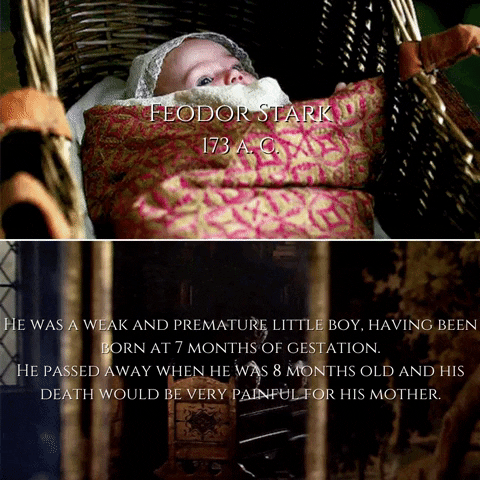


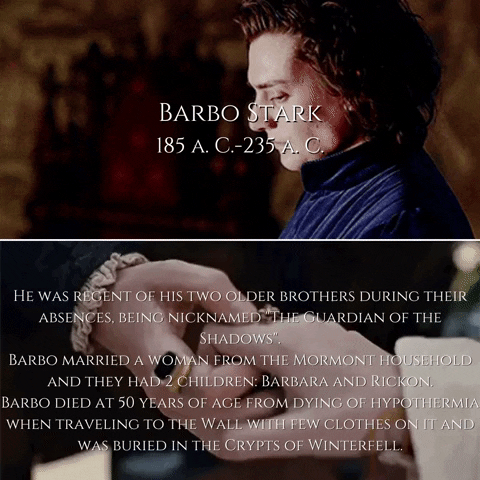
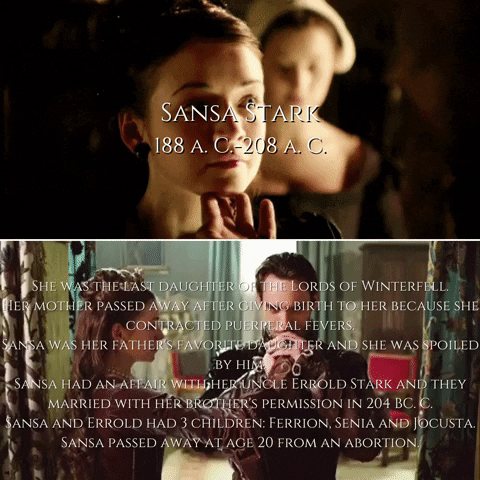
𝕵𝖔𝖓𝖓𝖊𝖑 𝕾𝖙𝖆𝖗𝖐 𝖆𝖓𝖉 𝕾𝖆𝖓𝖘𝖆 𝕾𝖙𝖆𝖗𝖐- 𝕮𝖍𝖎𝖑𝖉𝖗𝖊𝖓 𝕬𝖀
47 notes
·
View notes
Photo

𝔽𝕒𝕝𝕖𝕟𝕒 𝕊𝕥𝕠𝕜𝕖𝕨𝕠𝕣𝕥𝕙
𝑭𝒂𝒍𝒆𝒏𝒂 𝑺𝒕𝒐𝒌𝒆𝒘𝒐𝒓𝒕𝒉 𝒌𝒏𝒐𝒘𝒏 𝒂𝒔 "𝑳𝒂𝒅𝒚 𝑺𝒕𝒐𝒌𝒆𝒘𝒐𝒓𝒕𝒉" 𝒊𝒔 𝒔𝒆𝒆𝒏 𝒂𝒔 𝒐𝒏𝒆 𝒐𝒇 𝒕𝒉𝒆 𝒃𝒆𝒔𝒕 𝒌𝒏𝒐𝒘𝒏 𝒄𝒂𝒔𝒂𝒏𝒐𝒗𝒂𝒔 𝒐𝒇 𝒕𝒉𝒆 𝑪𝒂𝒑𝒊𝒕𝒂𝒍 𝒐𝒇 𝒕𝒉𝒆 𝑺𝒆𝒗𝒆𝒏 𝑾𝒐𝒓𝒍𝒅𝒔.
𝑭𝒂𝒍𝒆𝒏𝒂 𝒂𝒍𝒘𝒂𝒚𝒔 𝒔𝒕𝒐𝒐𝒅 𝒐𝒖𝒕 𝒇𝒐𝒓 𝒉𝒆𝒓 𝒃𝒆𝒂𝒖𝒕𝒚 𝒂𝒏𝒅 𝒄𝒉𝒂𝒓𝒎, 𝒃𝒖𝒕 𝒂𝒃𝒐𝒗𝒆 𝒂𝒍𝒍 𝒇𝒐𝒓 𝒉𝒆𝒓 𝒈𝒓𝒆𝒂𝒕 𝒂𝒎𝒃𝒊𝒕𝒊𝒐𝒏 𝒂𝒏𝒅 𝒉𝒆𝒓 𝒍𝒐𝒘𝒆𝒓 𝒑𝒂𝒔𝒔𝒊𝒐𝒏𝒔.
𝑶𝒏𝒆 𝒐𝒇 𝒕𝒉𝒆 𝒃𝒆𝒔𝒕 𝒌𝒏𝒐𝒘𝒏 𝒓𝒖𝒎𝒐𝒓𝒔 𝒐𝒇 𝒉𝒆𝒓 𝒘𝒂𝒔 𝒕𝒉𝒂𝒕 𝒔𝒉𝒆 𝒕𝒓𝒊𝒆𝒅 𝒕𝒐 𝒔𝒆𝒅𝒖𝒄𝒆 𝒂𝒏𝒅 𝒃𝒆 𝒕𝒉𝒆 𝒘𝒊𝒇𝒆 𝒐𝒇 𝒕𝒉𝒆 𝒚𝒐𝒖𝒏𝒈 𝑨𝒆𝒈𝒐𝒏, 𝒔𝒐𝒏 𝒐𝒇 𝒕𝒉𝒆 𝒓𝒊𝒄𝒉 𝒒𝒖𝒆𝒆𝒏 𝑹𝒉𝒂𝒆𝒏𝒚𝒓𝒂 𝑻𝒂𝒓𝒈𝒂𝒓𝒚𝒆𝒏. 𝑯𝒐𝒘𝒆𝒗𝒆𝒓, 𝒕𝒉𝒆 𝒚𝒐𝒖𝒏𝒈 𝒎𝒂𝒏 𝒓𝒆𝒋𝒆𝒄𝒕𝒆𝒅 𝒉𝒆𝒓 𝒂𝒏𝒅 𝒎𝒂𝒓𝒓𝒊𝒆𝒅 𝒂𝒏𝒐𝒕𝒉𝒆𝒓 𝒘𝒐𝒎𝒂𝒏 𝒂 𝒇𝒆𝒘 𝒚𝒆𝒂𝒓𝒔 𝒍𝒂𝒕𝒆𝒓.
𝑨𝒇𝒕𝒆𝒓 𝒕𝒉𝒊𝒔 𝒆𝒗𝒆𝒏𝒕, 𝑭𝒂𝒍𝒆𝒏𝒂 𝒔𝒑𝒐𝒌𝒆 𝒂𝒈𝒂𝒊𝒏 𝒘𝒉𝒆𝒏 𝒊𝒕 𝒘𝒂𝒔 𝒅𝒊𝒔𝒄𝒐𝒗𝒆𝒓𝒆𝒅 𝒕𝒉𝒂𝒕 𝒔𝒉𝒆 𝒉𝒂𝒅 𝒎𝒂𝒊𝒏𝒕𝒂𝒊𝒏𝒆𝒅 𝒊𝒏𝒕𝒊𝒎𝒂𝒕𝒆 𝒓𝒆𝒍𝒂𝒕𝒊𝒐𝒏𝒔 𝒘𝒊𝒕𝒉 𝒕𝒉𝒆 𝒆𝒍𝒅𝒆𝒔𝒕 𝒔𝒐𝒏 𝒐𝒇 𝒕𝒉𝒆 𝒎𝒂𝒈𝒏𝒂𝒕𝒆 𝑽𝒊𝒔𝒆𝒓𝒚𝒔 𝑰𝑰, 𝒕𝒉𝒆 𝒔𝒄𝒂𝒏𝒅𝒂𝒍𝒐𝒖𝒔 𝑨𝒆𝒈𝒐𝒏 "𝑻𝒉𝒆 𝒖𝒏𝒘𝒐𝒓𝒕𝒉𝒚" 𝒘𝒉𝒐 𝒘𝒂𝒔 𝒂𝒕 𝒕𝒉𝒂𝒕 𝒕𝒊𝒎𝒆 𝒂 𝒚𝒐𝒖𝒏𝒈 𝒎𝒂𝒏 𝒐𝒇 17 𝒚𝒆𝒂𝒓𝒔.
𝑻𝒐 𝒉𝒊𝒅𝒆 𝒔𝒖𝒄𝒉 𝒔𝒄𝒂𝒏𝒅𝒂𝒍 𝒂𝒏𝒅 𝒘𝒊𝒕𝒉𝒐𝒖𝒕 𝒃𝒆𝒊𝒏𝒈 𝒅𝒂𝒎𝒂𝒈𝒆𝒅 𝒕𝒉𝒆 𝒓𝒆𝒑𝒖𝒕𝒂𝒕𝒊𝒐𝒏 𝒐𝒇 𝒕𝒉𝒆 𝑺𝒕𝒐𝒌𝒆𝒘𝒐𝒓𝒕𝒉, 𝑭𝒂𝒍𝒆𝒏𝒂 𝒘𝒂𝒔 𝒎𝒂𝒓𝒓𝒊𝒆𝒅 𝒘𝒊𝒕𝒉 𝑳𝒖𝒄𝒂𝒔 𝑳𝒐𝒕𝒉𝒔𝒕𝒐𝒏 𝒘𝒉𝒐 𝒃𝒆𝒄𝒂𝒎𝒆 𝒕𝒉𝒆 𝒂𝒅𝒎𝒊𝒏𝒊𝒔𝒕𝒓𝒂𝒕𝒐𝒓 𝒐𝒇 𝒕𝒉𝒆 𝒍𝒂𝒏𝒅𝒔 𝒐𝒇 𝑯𝒂𝒓𝒓𝒆𝒏𝒉𝒂𝒍 𝒂𝒏𝒅 𝒕𝒉𝒆𝒚 𝒘𝒆𝒓𝒆 𝒔𝒆𝒏𝒕 𝒂𝒘𝒂𝒚.
𝑭𝒐𝒓 𝒔𝒐𝒎𝒆 𝒚𝒆𝒂𝒓𝒔 𝒏𝒐𝒕 𝒎𝒖𝒄𝒉 𝒘𝒂𝒔 𝒉𝒆𝒂𝒓𝒅 𝒐𝒇 𝑭𝒂𝒍𝒆𝒏𝒂 𝑺𝒕𝒐𝒌𝒆𝒘𝒐𝒓𝒕𝒉 𝒖𝒏𝒕𝒊𝒍 𝒔𝒉𝒆 𝒓𝒆𝒕𝒖𝒓𝒏𝒆𝒅 𝒕𝒐 𝒕𝒉��� 𝑪𝒂𝒑𝒊𝒕𝒂𝒍 𝒂𝒏𝒅 𝒊𝒕 𝒘𝒂𝒔 𝒍𝒆𝒂𝒓𝒏𝒆𝒅 𝒕𝒉𝒂𝒕 𝒔𝒉𝒆 𝒉𝒂𝒅 𝒉𝒂𝒅 𝒕𝒘𝒐 𝒄𝒉𝒊𝒍𝒅𝒓𝒆𝒏 𝒘𝒊𝒕𝒉 𝒉𝒆𝒓 𝒉𝒖𝒔𝒃𝒂𝒏𝒅: 𝑱𝒆𝒚𝒏𝒆 𝒂𝒏𝒅 𝑴𝒂𝒏𝒇𝒓𝒚𝒅.
𝑫𝒆𝒔𝒑𝒊𝒕𝒆 𝒃𝒆𝒊𝒏𝒈 𝒂 𝒘𝒐𝒎𝒂𝒏 𝒂𝒓𝒐𝒖𝒏𝒅 47 𝒚𝒆𝒂𝒓𝒔 𝒐𝒍𝒅, 𝒕𝒉𝒆 𝒘𝒐𝒎𝒂𝒏 𝒄𝒐𝒏𝒕𝒊𝒏𝒖𝒆𝒅 𝒕𝒐 𝒎𝒂𝒊𝒏𝒕𝒂𝒊𝒏 𝒂𝒏 𝒆𝒍𝒆𝒈𝒂𝒏𝒕 𝒂𝒏𝒅 𝒇𝒓𝒆𝒔𝒉 𝒇𝒊𝒈𝒖𝒓𝒆.
𝑻𝒉𝒆 𝒓𝒖𝒎𝒐𝒓𝒔 𝒔𝒑𝒍𝒂𝒔𝒉𝒆𝒅 𝒐𝒏𝒄𝒆 𝒎𝒐𝒓𝒆 𝒂𝒏𝒅 𝒊𝒕 𝒘𝒂𝒔 𝒔𝒂𝒊𝒅 𝒕𝒉𝒂𝒕 𝑨𝒆𝒈𝒐𝒏 "𝑻𝒉𝒆 𝒖𝒏𝒘𝒐𝒓𝒕𝒉𝒚" 𝒂𝒏𝒅 𝑭𝒂𝒍𝒆𝒏𝒂 𝒓𝒆𝒕𝒖𝒓𝒏𝒆𝒅 𝒕𝒐 𝒓𝒆𝒔𝒖𝒎𝒆 𝒕𝒉𝒆𝒊𝒓 𝒓𝒐𝒎𝒂𝒏𝒄𝒆, 𝒃𝒖𝒕 𝒕𝒉𝒆𝒊𝒓 𝒃𝒊𝒈𝒈𝒆𝒔𝒕 𝒔𝒄𝒂𝒏𝒅𝒂𝒍 𝒘𝒂𝒔 𝒘𝒉𝒆𝒏 𝒉𝒆𝒓 𝒅𝒂𝒖𝒈𝒉𝒕𝒆𝒓, 𝑱𝒆𝒚𝒏𝒆, 𝒐𝒏𝒍𝒚 15 𝒚𝒆𝒂𝒓𝒔 𝒐𝒍𝒅, 𝒘𝒂𝒔 𝒔𝒆𝒆𝒏 𝒘𝒊𝒕𝒉 𝒕𝒉𝒆 𝒕𝒚𝒄𝒐𝒐𝒏 𝒊𝒏 𝒂 𝒔𝒐𝒎𝒆𝒘𝒉𝒂𝒕 𝒍𝒐𝒗𝒊𝒏𝒈.
𝑻𝒉𝒆 𝑳𝒐𝒕𝒉𝒔𝒕𝒐𝒏 𝒇𝒂𝒎𝒊𝒍𝒚 𝒅𝒆𝒄𝒊𝒅𝒆𝒅 𝒕𝒐 𝒓𝒆𝒕𝒖𝒓𝒏 𝒉𝒐𝒎𝒆 𝒂𝒇𝒕𝒆𝒓 𝒕𝒉𝒆𝒔𝒆 𝒕𝒖𝒓𝒃𝒖𝒍𝒆𝒏𝒕 𝒕𝒊𝒎𝒆𝒔, 𝒆𝒗𝒆𝒏 𝒕𝒉𝒐𝒖𝒈𝒉 𝑭𝒂𝒍𝒆𝒏𝒂 𝒘𝒂𝒔 𝒄𝒓𝒊𝒕𝒊𝒄𝒊𝒛𝒆𝒅 𝒇𝒐𝒓 𝒂𝒍𝒍𝒆𝒈𝒆𝒅𝒍𝒚 𝒔𝒆𝒍𝒍𝒊𝒏𝒈 𝒉𝒆𝒓 𝒅𝒂𝒖𝒈𝒉𝒕𝒆𝒓 𝒕𝒐 𝒕𝒉𝒆 𝑻𝒂𝒓𝒈𝒂𝒓𝒚𝒆𝒏 𝒎𝒐𝒈𝒖𝒍.
𝔽𝕒𝕝𝕖𝕟𝕒 𝕊𝕥𝕠𝕜𝕖𝕨𝕠𝕣𝕥𝕙-
𝑭𝒂𝒍𝒆𝒏𝒂 𝑺𝒕𝒐𝒌𝒆𝒘𝒐𝒓𝒕𝒉 𝒄𝒐𝒏𝒐𝒄𝒊𝒅𝒂 𝒄𝒐𝒎𝒐 “𝑳𝒂𝒅𝒚 𝑺𝒕𝒐𝒌𝒆𝒘𝒐𝒓𝒕𝒉” 𝒆𝒔 𝒗𝒊𝒔𝒕𝒂 𝒄𝒐𝒎𝒐 𝒖𝒏𝒂 𝒅𝒆 𝒍𝒂𝒔 𝒄𝒂𝒔𝒂𝒏𝒐𝒗𝒂𝒔 𝒎𝒂𝒔 𝒄𝒐𝒏𝒐𝒄𝒊𝒅𝒂𝒔 𝒅𝒆 𝒍𝒂 𝑪𝒂𝒑𝒊𝒕𝒂𝒍 𝒅𝒆 𝒍𝒐𝒔 𝑺𝒊𝒆𝒕𝒆 𝑴𝒖𝒏𝒅𝒐𝒔.
𝑭𝒂𝒍𝒆𝒏𝒂 𝒅𝒆𝒔𝒕𝒂𝒄𝒐 𝒔𝒊𝒆𝒎𝒑𝒓𝒆 𝒑𝒐𝒓 𝒔𝒖 𝒃𝒆𝒍𝒍𝒆𝒛𝒂 𝒚 𝒆𝒏𝒄𝒂𝒏𝒕𝒐, 𝒑𝒆𝒓𝒐 𝒔𝒐𝒃𝒓𝒆 𝒕𝒐𝒅𝒐 𝒑𝒐𝒓 𝒔𝒖 𝒈𝒓𝒂𝒏 𝒂𝒎𝒃𝒊𝒄𝒊ó𝒏 𝒚 𝒔𝒖𝒔 𝒑𝒂𝒔𝒊𝒐𝒏𝒆𝒔 𝒎𝒂𝒔 𝒃𝒂𝒋𝒂𝒔.
𝑼𝒏𝒐 𝒅𝒆 𝒍𝒐𝒔 𝒓𝒖𝒎𝒐𝒓𝒆𝒔 𝒎𝒂𝒔 𝒄𝒐𝒏𝒐𝒄𝒊𝒅𝒐𝒔 𝒇𝒖𝒆 𝒒𝒖𝒆 𝒕𝒓𝒂𝒕𝒐 𝒅𝒆 𝒔𝒆𝒅𝒖𝒄𝒊𝒓 𝒚 𝒔𝒆𝒓 𝒍𝒂 𝒆𝒔𝒑𝒐𝒔𝒂 𝒅𝒆𝒍 𝒋𝒐𝒗𝒆𝒏 𝑨𝒆𝒈𝒐𝒏, 𝒉𝒊𝒋𝒐 𝒅𝒆 𝒍𝒂 𝒓𝒊𝒄𝒂 𝒓𝒆𝒊𝒏𝒂 𝑹𝒉𝒂𝒆𝒏𝒚𝒓𝒂 𝑻𝒂𝒓𝒈𝒂𝒓𝒚𝒆𝒏. 𝑺𝒊𝒏 𝒆��𝒃𝒂𝒓𝒈𝒐 𝒆𝒍 𝒋𝒐𝒗𝒆𝒏 𝒍𝒂 𝒓𝒆𝒄𝒉𝒂𝒛𝒐 𝒚 𝒔𝒆 𝒄𝒂𝒔𝒐 𝒄𝒐𝒏 𝒐𝒕𝒓𝒂 𝒎𝒖𝒋𝒆𝒓 𝒖𝒏𝒐𝒔 𝒂ñ𝒐𝒔 𝒅𝒆𝒔𝒑𝒖é𝒔.
𝑻𝒓𝒂𝒔 𝒆𝒔𝒕𝒆 𝒂𝒄𝒐𝒏𝒕𝒆𝒄𝒊𝒎𝒊𝒆𝒏𝒕𝒐 𝑭𝒂𝒍𝒆𝒏𝒂 𝒗𝒐𝒍𝒗𝒊ó 𝒂 𝒅𝒂𝒓 𝒅𝒆 𝒉𝒂𝒃𝒍𝒂𝒓 𝒄𝒖𝒂𝒏𝒅𝒐 𝒔𝒆 𝒅𝒆𝒔𝒄𝒖𝒃𝒓𝒊ó 𝒒𝒖𝒆 𝒉𝒂𝒃í𝒂 𝒎𝒂𝒏𝒕𝒆𝒏𝒊𝒅𝒐 𝒓𝒆𝒍𝒂𝒄𝒊𝒐𝒏𝒆𝒔 𝒊𝒏𝒕𝒊𝒎𝒂𝒔 𝒄𝒐𝒏 𝒆𝒍 𝒉𝒊𝒋𝒐 𝒎𝒂𝒚𝒐𝒓 𝒅𝒆𝒍 𝒎𝒂𝒈𝒏𝒂𝒕𝒆 𝑽𝒊𝒔𝒆𝒓𝒚𝒔 𝑰𝑰, 𝒆𝒍 𝒆𝒔𝒄𝒂𝒏𝒅𝒂𝒍𝒐𝒔𝒐 𝑨𝒆𝒈𝒐𝒏 “𝑬𝒍 𝒊𝒏𝒅𝒊𝒈𝒏𝒐” 𝒒𝒖𝒆 𝒆𝒓𝒂 𝒑𝒐𝒓 𝒂𝒒𝒖𝒆𝒍 𝒆𝒏𝒕𝒐𝒏𝒄𝒆𝒔 𝒖𝒏 𝒋𝒐𝒗𝒆𝒏 𝒅𝒆 17 𝒂ñ𝒐𝒔.
𝑷𝒂𝒓𝒂 𝒐𝒄𝒖𝒍𝒕𝒂𝒓 𝒕𝒂𝒍 𝒆𝒔𝒄𝒂𝒏𝒅𝒂𝒍𝒐 𝒚 𝒔𝒊𝒏 𝒗𝒆𝒓𝒔𝒆 𝒑𝒆𝒓𝒋𝒖𝒅𝒊𝒄𝒂𝒅𝒂 𝒍𝒂 𝒓𝒆𝒑𝒖𝒕𝒂𝒄𝒊ó𝒏 𝒅𝒆 𝒍𝒐𝒔 𝑺𝒕𝒐𝒌𝒆𝒘𝒐𝒓𝒕𝒉, 𝑭𝒂𝒍𝒆𝒏𝒂 𝒇𝒖𝒆 𝒄𝒂𝒔𝒂𝒅𝒂 𝒄𝒐𝒏 𝑳𝒖𝒄𝒂𝒔 𝑳𝒐𝒕𝒉𝒔𝒕𝒐𝒏 𝒒𝒖𝒆 𝒔𝒆 𝒄𝒐𝒏𝒗𝒊𝒓𝒕𝒊ó 𝒆𝒏 𝒆𝒍 𝒂𝒅𝒎𝒊𝒏𝒊𝒔𝒕𝒓𝒂𝒅𝒐𝒓 𝒅𝒆 𝒍𝒂𝒔 𝒕𝒊𝒆𝒓𝒓𝒂𝒔 𝒅𝒆 𝑯𝒂𝒓𝒓𝒆𝒏𝒉𝒂𝒍 𝒚 𝒇𝒖𝒆𝒓𝒐𝒏 𝒆𝒏𝒗𝒊𝒂𝒅𝒐𝒔 𝒍𝒆𝒋𝒐𝒔.
𝑫𝒖𝒓𝒂𝒏𝒕𝒆 𝒂𝒍𝒈𝒖𝒏𝒐𝒔 𝒂ñ𝒐𝒔 𝒏𝒐 𝒔𝒆 𝒔𝒖𝒑𝒐 𝒎𝒖𝒄𝒉𝒐 𝒅𝒆 𝑭𝒂𝒍𝒆𝒏𝒂 𝑺𝒕𝒐𝒌𝒆𝒘𝒐𝒓𝒕𝒉 𝒉𝒂𝒔𝒕𝒂 𝒒𝒖𝒆 𝒓𝒆𝒈𝒓𝒆𝒔𝒐 𝒂 𝒍𝒂 𝑪𝒂𝒑𝒊𝒕𝒂𝒍 𝒚 𝒔𝒆 𝒔𝒖𝒑𝒐 𝒒𝒖𝒆 𝒉𝒂𝒃í𝒂 𝒕𝒆𝒏𝒊𝒅𝒐 𝒅𝒐𝒔 𝒉𝒊𝒋𝒐𝒔 𝒄𝒐𝒏 𝒔𝒖 𝒎𝒂𝒓𝒊𝒅𝒐: 𝑱𝒆𝒚𝒏𝒆 𝒚 𝑴𝒂𝒏𝒇𝒓𝒚𝒅.
𝑷𝒆𝒔𝒆 𝒂 𝒔𝒆𝒓 𝒖𝒏𝒂 𝒎𝒖𝒋𝒆𝒓 𝒄𝒆𝒓𝒄𝒂 𝒅𝒆 𝒍𝒐𝒔 47 𝒂ñ𝒐𝒔, 𝒍𝒂 𝒎𝒖𝒋𝒆𝒓 𝒔𝒊𝒈𝒖𝒊ó 𝒎𝒂𝒏𝒕𝒆𝒏𝒊𝒆𝒏𝒅𝒐 𝒖𝒏𝒂 𝒆𝒍𝒆𝒈𝒂𝒏𝒕𝒆 𝒚 𝒇𝒓𝒆𝒔𝒄𝒂 𝒇𝒊𝒈𝒖𝒓𝒂.
𝑳𝒐𝒔 𝒓𝒖𝒎𝒐𝒓𝒆𝒔 𝒔𝒂𝒍𝒑𝒊𝒄𝒂𝒓𝒐𝒏 𝒖𝒏𝒂 𝒗𝒆𝒛 𝒎𝒂𝒔 𝒚 𝒔𝒆 𝒅𝒆𝒄í𝒂 𝒒𝒖𝒆 𝑨𝒆𝒈𝒐𝒏 “𝑬𝒍 𝒊𝒏𝒅𝒊𝒈𝒏𝒐” 𝒚 𝑭𝒂𝒍𝒆𝒏𝒂 𝒗𝒐𝒍𝒗𝒊𝒆𝒓𝒐𝒏 𝒂 𝒓𝒆𝒕𝒐𝒎𝒂𝒓 𝒔𝒖 𝒓𝒐𝒎𝒂𝒏𝒄𝒆, 𝒑𝒆𝒓𝒐 𝒔𝒖 𝒆𝒔𝒄𝒂𝒏𝒅𝒂𝒍𝒐 𝒎𝒂𝒔 𝒈𝒓𝒂𝒏𝒅𝒆 𝒇𝒖𝒆 𝒄𝒖𝒂𝒏𝒅𝒐 𝒔𝒖 𝒉𝒊𝒋𝒂, 𝑱𝒆𝒚𝒏𝒆 𝒅𝒆 𝒔𝒐𝒍𝒐 15 𝒂ñ𝒐𝒔 𝒇𝒖𝒆 𝒗𝒊𝒔𝒕𝒂 𝒋𝒖𝒏𝒕𝒐 𝒂𝒍 𝒎𝒂𝒈𝒏𝒂𝒕𝒆 𝒅𝒆 𝒖𝒏𝒂 𝒎𝒂𝒏𝒆𝒓𝒂 𝒖𝒏 𝒕𝒂𝒏𝒕𝒐 𝒄𝒂𝒓𝒊ñ𝒐𝒔𝒂.
𝑳𝒂 𝒇𝒂𝒎𝒊𝒍𝒊𝒂 𝑳𝒐𝒕𝒉𝒔𝒕𝒐𝒏 𝒅𝒆𝒄𝒊𝒅𝒊ó 𝒗𝒐𝒍𝒗𝒆𝒓 𝒂 𝒔𝒖 𝒉𝒐𝒈𝒂𝒓 𝒕𝒓𝒂𝒔 𝒆𝒔𝒕𝒐𝒔 𝒕𝒖𝒓𝒃𝒖𝒍𝒆𝒏𝒕𝒐𝒔 𝒎𝒐𝒎𝒆𝒏𝒕𝒐𝒔, 𝒂𝒖𝒏 𝒒𝒖𝒆 𝑭𝒂𝒍𝒆𝒏𝒂 𝒇𝒖𝒆 𝒄𝒓𝒊𝒕𝒊𝒄𝒂𝒅𝒂 𝒑𝒐𝒓 𝒔𝒖𝒑𝒖𝒆𝒔𝒕𝒂𝒎𝒆𝒏𝒕𝒆 𝒗𝒆𝒏𝒅𝒆𝒓 𝒂 𝒔𝒖 𝒉𝒊𝒋𝒂 𝒂𝒍 𝒎𝒂𝒈𝒏𝒂𝒕𝒆 𝑻𝒂𝒓𝒈𝒂𝒓𝒚𝒆𝒏.
9 notes
·
View notes
Photo






Mejores destinos para los Hijos de los Reyes Católicos- Catalina de Aragón
Catalina era la ultima hija de los Reyes Católicos y considerada como una de las mas hermosas poseyendo unos largos cabellos rojizos y grandes ojos azules como los de su madre, Isabel.
Catalina estuvo comprometida desde su infancia con el príncipe de Gales, Arturo Tudor que era el heredero al trono inglés. Sin embargo la princesa no viajo a Inglaterra hasta 1501 cuando tenia unos 15 años de edad. Durante el tiempo de espera, Catalina y Arturo intercambiaban numerosas cartas donde ambos se fueron enamorando poco a poco y se podía transmitir las ansias que tenia el príncipe al ver a su prometida.
Su llegada a Inglaterra causo gran expectación y conoció a su prometido poco antes de la boda, enamorándose a primera vista.
Tras celebrarse la boda y consumarse el lecho, Arturo y Catalina partieron hacia Gales, instalándose en el Castillo de Ludlow. La pareja llevo una vida estable compartiendo estudios, conversaciones y juegos.
Sin embargo en 1502 los príncipes de Gales enfermaron repentinamente, aun que Catalina se recupero rápido y rezo todos los días por la mejora de su marido.
Para sorpresa de todos el príncipe Arturo mejoro notablemente y la pareja se volvió aun mas unida que nunca. Rápidamente la pareja fue enviada a la corte de los reyes ingleses por temor a que las frías temperaturas en Gales afectaran mas la salud de los príncipes.
Arturo y Catalina fueron una pareja apasionada, pero no fue hasta 1507 que la infanta se quedo embarazada por primera vez siendo esto una gran alegría para Inglaterra que esperaban al ansiado heredero varón.
Catalina alumbro ese mismo año a su primer hijo, Eduardo y esto fue celebrado por todo lo alto, aumentando la popularidad de la infanta española.
Pese a la salud algo delicada de Arturo, el y Catalina llegarían a tener 11 hijos en común:
Eduardo VI (1507-1577) Fue rey de Inglaterra y tercer rey de la Casa Tudor. Fue conocido como “El conciliador” por sus reformas pacificas y su buen entendimiento con otros reinos. Se caso con su prima Leonor de York y tuvieron 5 hijos: Enrique VIII, Ana, Leonor, Eduardo y Fernando.
Isabel (1509-1568) Fue en dos ocasiones Reina consorte de Francia. Se caso en primeras nupcias con su primo el rey Orlando I teniendo con el 3 hijos: Orlando II, Charlotte y Margaret. Tras ser asesinado su marido, su cuñado el nuevo rey Charles X la forzó a casarse con el y tuvieron 4 hijos: Charles, Odon, Blanca e Isabel. Al enviudar por segunda vez, su hijo Orlando II fue coronado.
Carlos I (1510-1588) Fue rey de Irlanda y creador de la segunda facción de los Tudor, los Tudor-dalta. Fue conocido como “El culto” por su amor por la literatura, las artes y la educación reformando escuelas para los mas necesitados. Se caso con Isabel Jagellon y tuvieron 5 hijas: Enriqueta I, Catalina María, Isabel, Victoria y Ana. Su hija Enriqueta lo sucedió tras su muerte.
María (1512-1569) Fue reina consorte de Escocia y condesa de Morton. Se caso con su primo Jacobo V de Escocia en 1526 y tuvieron 4 hijos: Margaret, Mary, Jacobo VI y Roberto. Tras enviudar en 1542, María se caso con James Douglas, futuro conde de Morton y tuvieron una hija: Jane.
Edmundo (1514-1559) Fue Duque de Somerset y conocido por sus problemas mentales. Edmundo desempeño una carrera militar donde desarrollo su gusto por la guerra, la sangre y las artes amatorias, teniendo varias amantes antes de cumplir los 16 años.
Se caso con Margarita Howard y tuvieron 15 hijos.
Arturo (1516-1526) Fue Duque de Richmond al cumplir los 5 años. Sin embargo Arturo falleció a los 10 años de edad debido al sudor inglés.
Fernando (1518-1519) Falleció poco después de cumplir su primer año.
Anne (1519) Murió poco después de nacer.
Aborto de gemelas (1521)
Catalina (1522-1545) Fue duquesa de Ross al casarse con Alejandro, hermano del rey Jacobo V. Alejandro y Catalina tuvieron 7 hijos: Ruperto, Enrique, Luisa, Margaret, Alejandro, Isabel María y Renata.
Catalina falleció tras dar a luz a su séptimo bebé.
En 1509 falleció el rey Enrique VII de Inglaterra y los príncipes fueron coronados como los nuevos reyes de Inglaterra. Los nuevos reyes fueron aclamados por todo el reino al ser vistos como la nueva esperanza de Inglaterra y fueron llamados “Los reyes de Camelot”.
La coronación de Catalina destaco por ser la misma reina madre Isabel de York que le entrego personalmente sus joyas y su corona de reina, además de llamarla públicamente “mi hija”.
“La reina española” como era conocida fue bastante popular por su belleza, su educación y por su gran administración, además de ser una gran aliada politica para su marido al cual acompañaba siempre que podía a las reuniones con el consejo.
Catalina también hizo numerosas donaciones a la caridad y a la iglesia, además de ayudar a algunos orfanatos y fundaciones de ayuda usando su propio dinero como Reina consorte.
Uno de los momentos mas importantes de la reina fue cuando el rey partió hacia Francia en 1520 para entablar algunas negociaciones y Catalina se quedo como regente por medio año. Su regencia destaco por su apoyo a distintos comercios de pan, telas y armas logrando traer reservas a su pueblo para enfrentarse al duro invierno o algún posible enfrentamiento contra Francia.
También destaco por ser junto a su hermana la emperatriz Juana participe de una alianza entre España, Francia e Inglaterra creándose una triple alianza siendo la propia Catalina que se reunió con su cuñada, Margarita de Austria y su sobrina la reina de Francia Margarita de Trastámara para entablar aquella paz.
Catalina fue el gran amor del rey Arturo y se le considerada como su reina Ginebra. La reina gozo del amor y la fidelidad de su marido, sobre todo cuando alumbro a su ultima hija y los médicos la incapacitaron para traer mas hijos, algo que fue aceptado por Arturo debido a que no deseaba peligrar la vida de su amada esposa.
La reina también destaco por ser una madre dedicada y amar mucho a sus hijos, aun que también sufrió con las muertes de algunos de sus hijos sobre todo con la de su hijo Arturo por el sudor inglés.
Catalina también llego a pasarla mal con el comportamiento de su hijo Edmundo y con los supuestos problemas mentales que padecía, además de siempre procurar a su nuera Margaret Howard que se veía afectada por sus numerosos partos y la locura de su marido.
En 1545 falleció su hija favorita Catalina tras dar a luz a su ultima hija, siendo esta muerte muy dolorosa para los reyes que habían perdido a un quinto hijo. Sin embargo la reina nunca se llego a recuperar de este duro golpe y paso meses encerrada en sus aposentos donde lloraba, rezaba y cosía algunas prendas que solía hacer para sus hijos, especialmente para Catalina.
Al final la reina Catalina de Aragón acabo falleciendo ese mismo año a los 60 años de edad supuestamente por la gran tristeza que llevo arrastrando tras morir su hija.
El rey Arturo no se entero de la muerte de su esposa debido a que el también llego a padecer diversos problemas de salud y se dice que tras recibir aquella dolorosa noticia se desmayo.
El funeral de Catalina se celebro a principios del 1546 y Arturo vistió de luto hasta su muerte en 1550 por causas naturales a los 64 años de edad.
Best destinations for the Children of the Catholic Monarchs- Catherine of Aragon
Catherine was the last daughter of the Catholic Monarchs and considered one of the most beautiful, possessing long reddish hair and large blue eyes like those of her mother, Isabel.
Catherine was engaged from her childhood to the Prince of Wales, Arthur Tudor, who was the heir to the English throne. However the princess herself did not travel to England until 1501 when she was about 15 years old. During the waiting time, Catherine and Arturo exchanged numerous letters where both fell in love little by little and it was possible to transmit the anxieties that the prince had when he saw his fiancée.
Her arrival in England caused great excitement and she met her fiancé shortly before the wedding, falling in love with her at first sight of her.
After the wedding was celebrated and the bed consummated, Arthur and Catherine left for Wales, settling in Ludlow Castle. The couple led a stable life sharing studies, conversations and games.
However in 1502 the princes of Wales fell ill suddenly, although Catherine recovered quickly and prayed every day for the improvement of her husband.
To everyone’s surprise, Prince Arthur improved remarkably and the couple became even more united than ever. The couple were quickly sent to the court of the English kings for fear that the cold temperatures in Wales would further affect the health of the princes.
Arthur and Catherine were a passionate couple, but it was not until 1507 that the infanta became pregnant for the first time, this being a great joy for England who were waiting for the longed-for male heir.
Catherine gave birth that same year to her first child, Eduardo, and this was celebrated in style, increasing the popularity of the Spanish Infanta.
Despite Arturo’s somewhat delicate health, he and Catherine would have 11 children in common:
Edward VI (1507-1577) He was King of England and the third King of the House of Tudor. He was known as “The Conciliator” for his peaceful reforms and good understanding of him with other kingdoms. He married his cousin Eleanor of York and they had 5 children: Henry VIII, Anne, Eleanor, Edward and Ferdinand.
Elizabeth (1509-1568) She was twice Queen consort of France. She married her first cousin, King Orlando I, having 3 children with him: Orland II, Charlotte and Margaret. After her husband was assassinated, her brother-in-law, her new King Charles X, forced her to marry hers and they had 4 children: Charles, Odon, Blanche and Elisabeth. When he was widowed for the second time, her son Orlando II was crowned.
Charles I (1510-1588) He was King of Ireland and creator of the second faction of the Tudors, the Tudor-Dalta. He was known as “The Cult” for his love of literature, the arts and education reforming schools for the needy. He married Isabel Jagellon and they had 5 daughters: Henrietta I, Catherine Mary, Elizabeth, Victoria and Anne. Her daughter Henrietta succeeded him after her death.
Mary (1512-1569) She was Queen Consort of Scotland and Countess of Morton. She married her cousin James V of Scotland in 1526 and they had 4 children: Margaret, Mary, James VI, and Robert. After being widowed in 1542, Mary married James Douglas, future Earl of Morton and they had a daughter: Jane.
Edmund (1514-1559) He was Duke of Somerset and known for his mental problems. Edmundo carried out a military career where he developed his taste for war, blood and the lovemaking arts, having several lovers before turning 16 years old.
He married Margaret Howard and they had 15 children.
Arthur (1516-1526) was Duke of Richmond when he was 5 years old. However Arthur passed away at 10 years of age due to English sweat.
Ferdinand (1518-1519) died shortly after completing his first year.
Anne (1519) died shortly after birth.
Twin abortion (1521)
Catherine (1522-1545) she was Duchess of Ross when she married Alexander, brother of King James V. Alexander and Catherine had 7 children: Rupert, Henry, Louise, Margaret, Alexander, Elizabeth Mary and Renee.
Catherine passed away after giving birth to her seventh baby.
In 1509 King Henry VII of England passed away and the princes were crowned the new kings of England. The new kings were hailed throughout the kingdom as seen as the new hope of England and were called “The Kings of Camelot.”
Catherine’s coronation stood out for being the same queen mother of her Elizabeth of York who personally gave her her jewels and her queen’s crown, in addition to publicly calling her “my daughter”.
“The Spanish queen” as she was known was quite popular for her beauty, her upbringing and for her great administration, as well as being a great political ally for her husband, whom she accompanied whenever she could at night. meetings with the council.
Catherine also made numerous donations to charity and the church, as well as helping some orphanages and relief foundations using her own money as Queen Consort.
One of the most important moments of the queen was when the king left for France in 1520 to start some negotiations and Catherine stayed as regent for half a year. Her regency stood out for her support for different shops of bread, cloth and weapons, managing to bring reserves to her people to face the harsh winter or a possible confrontation against France.
I also stand out for being with her sister the Empress Juana participates in an alliance between Spain, France and England creating a triple alliance being Catherine herself who met with her sister-in-law, Margaret of Austria and her niece, the Queen of France, Margaret of Trastamara to make that peace.
Catherine was the great love of King Arthur and is regarded as his queen Guinevere. The queen enjoyed the love and fidelity of her husband, especially when she gave birth to her last daughter and the doctors disabled her to bring more children, something that was accepted by Arturo because he did not want to endanger her life. her beloved wife.
The queen also stood out for being a dedicated mother and loving her children very much, even though she also suffered with the deaths of some of her children, especially with hers, her son Arturo because of the English sweat.
Catherine also got to have a hard time with the behavior of her son Edmundo of her and with the supposed mental problems that she suffered from her, in addition to always seeking her daughter-in-law Margaret Howard who was affected by her numerous deliveries and the madness of her husband.
In 1545 her favorite daughter Catherine died after giving birth to her last daughter, this death being very painful for the kings who had lost a fifth child. However, the queen never recovered from this hard blow and she spent months locked in her rooms where she cried, she prayed and sewed some clothes that she used to make for her children, especially for Catherine.
In the end, Queen Catherine of Aragón ended up dying that same year at the age of 60, supposedly due to the great sadness that she carried after her daughter died.
King Arthur did not learn of the death of his wife because he also suffered from various health problems and it is said that after receiving that painful news he fainted.
Catherine’s funeral was held at the beginning of 1546 and Arturo wore mourning until his death in 1550 from natural causes at the age of 64.
39 notes
·
View notes
Photo






Mejores destinos para los Hijos de los Reyes Católicos- María de Aragón
María fue la hija mas desconocida de los Reyes Católicos siendo considerada bonita, pero no tanto como sus hermanas. La infanta era piadosa, caritativa y prudente ante todos los conflictos que estuvieron ocurriendo en la familia Trastamara.
En un principió se pensó en comprometerla con el rey James IV de Escocia, pero las negociaciones matrimoniales no llegaron a mucho y el rey se acabaría casando con la princesa Margarita Tudor.
Tras su compromiso fallido, su hermana mayor la reina de Portugal Isabella de Aragón negocio un matrimonio para María con el duque de Viseu y Beja, Manuel de Avís que era hermano de la reina viuda Leonor de Viseu.
Manuel de Viseu no estaba muy convencido por aquella unión debido a que el tenia sentimientos escondidos por la reina Isabella, pero accedió a casarse con la infanta para asegurar la sucesión de sus ducados.
Las negociaciones matrimoniales apenas duraron un año al ser Isabella de Aragon la mediadora de aquel compromiso y María partió hacia Portugal en 1500 llegando hasta la ciudad de Alcácer do Sal donde se celebro la boda.
Manuel y María se enamoraron a primera vista durante la ceremonia. Manuel llego a considerar a su esposa como “una flor hermosa, delicada y pequeña” e incluso llego a agradecer por carta a la reina Isabella de Aragón por haber formado aquella alianza ya que de esa forma conoció a su gran amor.
María fue nombrada Duquesa consorte de Viseu y Beja tras casarse con Manuel. La pareja viajo al ducado de Viseu donde fueron bien recibidos nada mas entrar y María fue aclamada por todo el mundo.
Los reyes de Portugal les otorgaron como regalo de bodas los títulos de duques de Trancoso, Guimarães y una parte del ducado de Guarda, siendo los primeros Duques del ducado Guarda-Viseu.
En el ducado se celebraron sencillos, pero bellos bailes en honor a la nueva duquesa y también se llevo a cabo un torneo de justas donde participo Manuel. Se dice que el duque paro su montura ante su esposa y le dio una rosa roja como símbolo de su gran amor y pasión, lo que provoco que María fuera llamada por los nobles y el pueblo como “La rosa de Viseu”.
María se quedo embarazada casi dos años después de casarse con su marido y alumbro en 1502 a su primer hijo, Juan que sería Duque de Viseu.
Pese a que al principio se creía que la duquesa tenia problemas de fertilidad, ella acabaría dándole a su marido 10 hijos seguidos:
Juan de Viseu (1502-1554) Fue duque de Viseu y miembro del consejo del rey Juan III de Portugal. El duque se caso con su prima, Catalina de Austria y tuvieron 4 hijos: Manuel, Felipe, María Manuela y Juan Manuel.
Isabella de Portugal (1503-1547) Fue Emperatriz consorte del Sacro Imperio Romano Germánico al casarse con su primo, Charles V y al sirvió como su regente al lado de su tía-suegra, Joanna. Isabella y Charles tuvieron 5 hijos: Philip I, Maria, Ferdinand, Joanna y John.
Beatriz de Portugal (1504-1538) Fue Duquesa consorte de Saboya al casarse con Carlos III de Saboya y tuvieron 3 hijos vivos: Manuel Filiberto I, Catalina y Isabella. Beatriz fue el tercer vástago en morir antes que su madre.
Luis de Beja (1506-1555) Fue Duque de Beja como herencia paternal. Luis tuvo distintos enfrentamientos con su hermano mayor debido a su supuesto casamiento morganático con una judía. Pese a esto Luis se casaría con su prima, Dulce de Portugal y esta le daría 5 hijos: Luisa, Ana, Luis, Alonzo y Dulce.
Fernando de Guarda (1507-1545) Fue Duque de Guarda-Viseu al dividirse una parte de estos territorios. Se caso con Guiomar Coutinho y tuvieron dos hijos: Luisa y Fernando de Guarda.
Alfonso de Portugal (1509-1548) Fue sucesivamente obispo de Guarda, cardenal, obispo de Viseu, obispo de Évora y finalmente arzobispo de Lisboa. Al morir inesperadamente en 1548 sus títulos fueron heredados a su sobrino, Don Teobaldo de Portugal que fue su estudiante.
María de Portugal (1511-1513) Falleció a los casi 2 años de edad, siendo su muerte una gran tristeza para su madre.
Enrique de Trancoso (1512-1580) Fue duque de Trancoso y miembro importante del consejo del rey Juan III. Enrique no se caso hasta el 1554 con la noble sueca, Catalina Stenbock con la cual tuvo 3 hijos: Enrique, Birgitta y Gustavo.
Eduardo de Guimarães (1515-1549) Fue duque de Guimarães. Se caso con Isabella de Braganza y tuvieron 3 hijos: María, Catalina y Eduardo de Guimarães.
Antonio (1516) Falleció poco después de nacer.
Tras el nacimiento de su hijo Antonio y el fallecimiento de este, María se negó a traer mas hijos al mundo y verlos morir antes que ella. Esto fue aceptado por Manuel que se mantuvo fiel a su esposa pese a no volver a compartir el lecho.
María fue una madre dedicada y amorosa dejando una gran huella en sus hijos que siempre guardaron buenos recuerdos de su progenitora.
La duquesa no se entrometió en la política portuguesa, aun que llego a recibir a los distintos embajadores extranjeros que visitaban el ducado y se dice que María dejaba una buena impresión, además de tener un perfecto portugués a la hora de entablar conversaciones con los visitantes.
También fue una mujer muy piadosa y ayudo a diferentes conventos, organizaciones religiosas y monasterios a fundar sus propias escuelas o edificios santos.
María sufrió mucho con las muertes de algunos de sus hijos que fallecieron antes que ella y su marido. Su hija Beatriz falleció debido a la tuberculosis en 1538 y María guardo luto por su hija por año, además de permanecer unos meses en la corte saboyana junto a sus nietos, hijos de Beatriz.
Otro de sus hijos fue Fernando que falleció tras varios días de padecer viruela en 1545.
María llevo estas muertes como pudo, pero en el año 1547 falleció su hija mayor, Isabella tras un cáncer de mama y dos meses después su marido murió debido a una arritmia cardiaca. Estas muertes fueron un gran dolor para María que se refugió en la religión al igual que sus hermanos.
También solía visitar el Sacro Imperio para ver a sus nietos los archiduques y visito a su hermana mayor, Juana en su residencia de Tordesillas y ambas se consolaban ante las perdidas que iban pasando cada una.
Su hijo Alfonso fallecería inesperadamente en 1548 y María se mantuvo al lado de su hijo que falleció en sus brazos. La muerte de su hijo la marco de por vida y se resguardo aun mas en la religión, llegando a usar prendas mas aptas de una monja en vez de una duquesa o viuda.
María empezó a sufrir graves problemas de corazón a inicios del 1549 y permaneció en cama por varios meses hasta que falleció unos días antes de cumplir los 67 años de edad en Portugal. Su muerte fue muy sentida por los nobles leales al ducado de Viseu y Beja, pero también fue bastante dolorosa para sus hijos que siempre mantendrían un especial recuerdo de ella.
~~~~~~~~~~~~~~~~~~~~~~~~~~~~~~~~~~~~~~~~~~~~~~~~~~~~~~~
Best destinations for the Children of the Catholic Monarchs- María of Aragón
María was the most unknown daughter of the Catholic Monarchs, being considered pretty, but not as pretty as her sisters. The infanta was pious, charitable and prudent in the face of all the conflicts that were occurring in the Trastamara family.
At first, it was thought of committing her to King James IV of Scotland, but the marriage negotiations did not go to much and the king would end up marrying Princess Margaret Tudor.
After her failed engagement, her older sister, the Queen of Portugal Isabella of Aragón, negotiated a marriage for María with the Duke of Viseu and Beja, Manuel of Avís, who was the brother of the widowed queen Leonor of Viseu.
Manuel of Viseu was not very convinced by that union because he had hidden feelings for Queen Isabella, but he agreed to marry the infanta to ensure the succession of her duchies.
The marriage negotiations barely lasted a year as Isabella of Aragon was the mediator of that engagement and Maria left for Portugal in 1500 reaching the city of Alcácer do Sal where the wedding took place.
Manuel and María fell in love at first sight during the ceremony. Manuel came to consider her wife as “a beautiful, delicate and small flower” and even came to thank Queen Isabella of Aragon by letter for having formed that alliance since in that way he met her great love.
María was named Duchess consort of Viseu and Beja after marrying Manuel. The couple traveled to the Duchy of Viseu where they were well received as soon as they entered and Maria was acclaimed by the whole world.
In the duchy, simple but beautiful dances were held in honor of the new duchess and a jousting tournament was also held where Manuel participated. It is said that the duke stopped her mount before her wife and gave her a red rose as a symbol of her great love and passion, which caused Mary to be called by the nobles and the people as “The rose of Viseu ”.
María became pregnant almost two years after marrying her husband and gave birth to her first child, Juan, who would be Duke of Viseu in 1502.
Although at first it was believed that the duchess had fertility problems, she would end up giving her husband 10 children in a row:
John de Viseu (1502-1554) He was Duke of Viseu and a member of the council of King Juan III of Portugal. The duke married his cousin, Catherine of Austria and they had 4 children: Manuel, Felipe, María Manuela and Juan Manuel.
Isabella of Portugal (1503-1547) She was Empress consort of the Holy Roman Empire by marrying her cousin, Charles V and serving as her regent alongside her aunt-mother-in-law, Joanna. Isabella and Charles had 5 children: Philip I, Maria, Ferdinand, Joanna and John.
Beatrice of Portugal (1504-1538) She was Duchess consort of Savoy when she married Carlos III of Savoy and they had 3 living children: Emmanuel Philibert I, Catherine and Isabella. Beatriz was the third child to die before her mother.
Louis of Beja (1506-1555) He was Duke of Beja as a paternal inheritance. Luis had different confrontations with his older brother due to his supposed morganatic marriage to a Jewess. Despite this, Luis would marry his cousin, Dulce de Portugal and she would give him 5 children: Louise, Anna, Louis, Alonzo and Dulce.
Ferdinando of Guarda (1507-1545) He was Duke of Guarda-Viseu when part of these territories were divided. He married Guiomar Coutinho and they had two children: Luisa and Fernando of Guarda.
Alfonso of Portugal (1509-1548) He was successively Bishop of Guarda, Cardinal, Bishop of Viseu, Bishop of Évora and finally Archbishop of Lisbon. When he died unexpectedly in 1548, his titles were inherited to his nephew, Don Teobaldo de Portugal, who was his student.
María of Portugal (1511-1513) she died when she was almost 2 years old, her death being a great sadness for her mother.
Henry of Trancoso (1512-1580) He was Duke of Trancoso and an important member of the council of King Juan III. Enrique did not marry until 1554 with the Swedish noblewoman, Catherine Stenbock with whom he had 3 children: Enrique, Birgitta and Teobaldo.
Duarte of Guimarães (1515-1549) He was Duke of Guimarães. He married Isabella de Braganza and they had 3 children: María, Catherine and Duarte of Guimarães.
Antonio (1516) died shortly after birth.
After the birth of her son Antonio and his death, María refused to bring more children into the world and see them die before her. This was accepted by Manuel who remained faithful to his wife despite not sharing the bed again.
María was a dedicated and loving mother leaving a great mark on her children who always kept good memories of her mother.
The Duchess did not interfere in Portuguese politics, although she did receive the various foreign ambassadors who visited the duchy and it is said that Maria left a good impression, in addition to having perfect Portuguese when it came to engaging in conversations with visitors.
She was also a very pious woman and helped different convents, religious organizations and monasteries to found their own schools or holy buildings.
Maria suffered greatly with the deaths of some of her children who died before her and her husband. Her daughter Beatriz hers died due to tuberculosis in 1538 and María kept mourning for her daughter for years, in addition to staying a few months at the Savoyard court with her grandchildren, Beatriz’s children.
Another of her children was Fernando, who died after several days of suffering from smallpox in 1545.
María carried these deaths as she could, but in the year 1547 her eldest daughter Isabella died after breast cancer and two months later her husband died due to a cardiac arrhythmia. These deaths were a great pain for Mary that she took refuge in religion like her brothers.
She also used to visit the Holy Empire to see her grandchildren, her archdukes, and she visited her older sister, Juana, at her residence in Tordesillas and they both consoled themselves for the losses that each one was going through.
Her son Alfonso hers would die unexpectedly in 1548 and María remained by the side of her son who died in her arms. The death of her son marked her for life and she sheltered herself even more in religion, coming to wear more suitable garments of a nun instead of a duchess or widow.
María herself began to suffer serious heart problems in early 1549 and she remained in bed for several months until she passed away a few days before reaching 67 years of age in Portugal. Her death was deeply felt by the nobles loyal to the Duchy of Viseu and Beja, but it was also quite painful for her children who would always keep a special memory of her.
17 notes
·
View notes
Photo




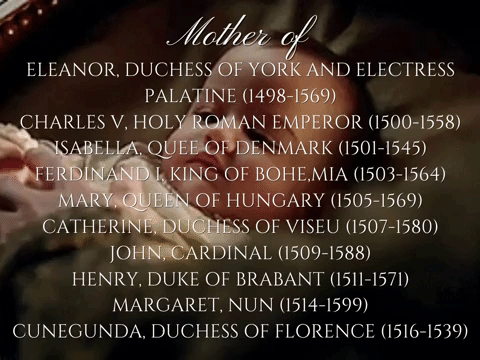

Mejores destinos para los Hijos de los Reyes Católicos- Juana de Aragón
Juana fue al igual que sus hermanas, una de las mujeres mas bellas de su epoca. A diferencia de sus hermanas Isabella y Catherine, Juana poseía los ojos oscuros, largos cabellos castaños y piel rosada teniendo un gran parecido con su padre.
La infanta era poco devota, pero lo mantuvo en secreto y era una muchacha pasional como su madre. La princesa estuvo unida a sus hermanos y asistió al matrimonio entre su hermana Isabella con el príncipe Alfonso de Portugal.
Juana y su hermano, Juan fueron comprometidos con los hijos del Emperador Maximilian I, los archiduques Philip y Margaret of Habsburg.
Juana viajo a Flandes en 1496 y tras una larga espera, la pareja al final se conoció, sintiendo una gran pasión entre ellos. La pareja se caso rapidamente y desato su gran pasión, pero este gran amor y pasión no duro mucho…
Felipe era un joven muy atractivo, pero muy mujeriego y tras Juana quedarse embarazada, el archiduque busco a jovencitas austriacas y a las damas de su esposa.
Aquellas infidelidades le dolieron mucho a la infanta y buscaba continuamente a su marido para impedir que mantuviera romances con otras mujeres. La relación se volvió toxica y se llego a decir que Juana estaba loca por Felipe, ya que llego a incluiso a ordenar que a una de las amantes de su esposo le fueran cortados sus cabellos y cara.
Pese a todos estos percanses, los archiduques fueron muy fertiles y llegaron a tener 10 hijos en común que llegaron a buena edad:
Leonor de Austria (1498-1568) Fue Duquesa de York al casarse con Henry Tudor, pero solo tuvieron tres hijos: Leonor, Eugenia y Maximiliano. Tras su divorcio en 1527, se caso en 1531 con Frederick II del Palatinado y tuvieron un hijo, Frederick III.
Charles V de Austria (1500-1558) Fue emperador del Sacro Imperio Romano Germanico. Charles fue llamado “El Carlo Magno Español” por sus combates con Francia y su arrojo en batalla. Se caso con su prima, Isabella of Portugal y tuvieron 5 hijos: Philip I, Maria, Ferdinand, Joanna y John.
Isabella de Austria (1501-1545) Fue reina consorte de Dinamarca al casarse con Christian II. Isabella tuvo 6 hijos con su primer marido: Juan II, Maximiliano, Philip, Dorothea, Christina y Henry. Al morir su marido en 1523, se caso con Christian duque de Schleswig y Holstein y tuvieron 3 hijos: Frederick, Anne y Magnus.
Ferdinand I de Austria (1503-1564) Fue regente y rey de Bohemia-iure uxoris. Se caso con Anne de Hungría y tuvieron 15 hijos en común. Su esposa fue declarada reina de Bohemia junto a Ferdinand, dividiéndose los territorios de Hungría y Bohemia.
María de Austria (1505-1569) Fue reina consorte y regente de Hungría al casarse con Louis II de Hungría. La pareja tuvo un hijo: Louis III y al morir su marido en 1531, María se convirtió en la regente de su hijo por 10 años.
Catalina de Austria (1507-1580) Fue duquesa de Viseu al casarse con su primo, John of Avis. Catalina tuvo 4 hijos vivos con su marido: Manuel, Felipe, María Manuela y Juan Manuel.
Juan de Austria (1509-1588) Fue cardenal y confidente del Papa Clemente VII. Juan tuvo un romance con una sirvienta bohémica con la cual tuvo 3 hijos: Alexander, Anna Joanna y Federica.
Enrique de Austria (1511-1571) Fue duque de Brabante desde 1549 a su muerte. Se caso con Sofia Jagellion y tuvieron 6 hijos: Sofia, Bona, Enrique, Úrsula, María y Teobaldo. Tuvo una gran enemistad con su hermano el Emperador.
Margarita de Austria (1514-1599) Se convirtió en monja tras la muerte de su padre en 1529. Fue la hermana mas longeva de los hijos de los Emperadores.
Cuneguda de Austria (1516-1539) Fue duquesa de Florencia al casarse con Alessandro de’ Medici y tuvieron dos hijas: Alessandra y Juliana. Falleció tras un aborto y sus hijas serian de las mujeres mas ricas de su época.
Juana fue popular por su alta fertilidad y pese a ser poco cariñosa en sus primeros años, la infanta llego a querer a sus hijos especialmente a sus hijas Leonor, Isabella y Catalina.
Su relación con Felipe fue de mal en peor, pero aun así los duques de Borgoña compartían el lecho para traer mas hijos y desatar sus profundas pasiones.
En 1519 falleció su suegro, Maximiliano I del Sacro Imperio Romano Germánico y su marido fue coronado como Felipe I del Sacro Imperio Romano Germánico, siendo Juana su emperatriz consorte.
Tras ser coronados la pareja se distancio y Juana poco a poco perdió aquel obsesivo amor que sentía por Felipe, centrándose mas en sus hijos y sus propios pasatiempos.
Juana fue popular en el Sacro Imperio, en un principió por su amor obsesivo por su marido y su sed de placer, pero al pasar el tiempo fue vista como una mujer de carácter fuerte, pasional y muy inteligente con forme se iba alejando de su obsesión por Felipe.
Aun así muchos nobles la apodaron “Juana la loca” y se dice que ella misma llego aprobar este mote, afirmando que “yo estoy loca, pero yo soy la emperatriz y ellos son mis subordinados, así que están sirviendo a una emperatriz loca”.
Pese a ser solo la emperatriz consorte, Juana destaco en la política austriaca y llego a reunirse con el consejo en lugar del emperador Felipe, que solo derrochaba el dinero del Imperio en sus placeres.
La emperatriz llegaría a reunirse con los embajadores extranjeros y entablo los matrimonios de algunos de sus hijos junto a su hijo mayor, Carlos con el cual mantuvo una relación algo tumultuosa por sus formas de pensar diferentes. Aun así Carlos llego a admirar el carácter y el coraje de su madre a la hora de ordenar.
En 1529 Felipe I “El hermoso” o “El Felón” falleció repentinamente debido a una caída de caballo tras una escapada para ver a una de sus amantes. Juana lloro amargamente la muerte de su marido y le guardo un luto de 2 años pese a que su matrimonio fue un gran desastre.
La emperatriz viuda asistió a la coronación de su hijo mayor, Carlos V del Sacro Imperio y este nombro a su madre junto a su esposa Isabel como regentes del Imperio en sus ausencias.
Juana fue una regente fría y capaz, mientras que su nuera mas suave y dedicada al pueblo, llegando a tener algunos desacuerdos con Isabel aun que la emperatriz viuda llego a decir que la nueva emperatriz era la mejor nuera que podía tener y que era digna del Imperio.
La loca llego a ejercer de regente en solitario cuando su hijo y su familia emprendían largos viajes a sus numerosos territorios, aun que estos trabajos afectaron su salud padeciendo de fuertes dolores de cabeza, de espalda y piernas, realizando su trabajo desde su alcoba.
Pese a ser una madre algo fría, Juana sufrió con las muertes de algunos de sus hijos en especial de su hija menor, Cuneguda en 1539 tras tener un aborto. Su trabajo como regente y las muertes de algunos de sus hijos, fueron apagando su salud y Juana se refugió un poco en la religión.
En 1545 falleció su hija Isabella y Juana llego a decir que esta fue asesinada por su segundo marido o el padre de este. Este fallecimiento provoco que la Emperatriz viuda se refugiara en la localidad de Tordesillas junto a su hija Margarita que era monja.
Juana vivió en aquel municipio por el resto de sus días donde era continuamente visitada por sus hijos, nietos y su hermana menor, María de Aragón que solía visitar España y el Sacro Imperio tras enviudar.
En 1550 Juana “La loca” sufrió un paro cardiaco mientras paseaba en su residencia en Tordesillas y falleció ese mismo instante a los 71 años de edad, siendo la hija de los reyes católicos que murió al pasar los 60 años de edad.
~~~~~~~~~~~~~~~~~~~~~~~~~~~~~~~~~~~~~~~~~~~~~~~~~~~~~~~
Best destinations for the Children of the Catholic Monarchs- Joanna of Aragón
Joanna was, like her sisters, one of the most beautiful women of her time. Unlike her sisters Isabella and Catherine, Joanna had dark eyes, long brown hair and pink skin bearing a great resemblance to her father.
The infanta was not very devout, but she kept it a secret and was a passionate girl like her mother. The princess was attached to her siblings and attended the marriage between her sister Isabella hers with Prince Alfonso of Portugal.
Joan and her brother John were betrothed to the sons of Emperor Maximilian I, Archdukes Philip and Margaret of Habsburg.
Joanna traveled to Flanders in 1496 and after a long wait, the couple finally met, feeling a great passion for each other. The couple married quickly and unleashed their great passion, but this great love and passion did not last long …
Felipe was a very attractive young man, but a very womanizer, and after Joanna became pregnant, the Archduke looked for young Austrians and the ladies of his wife.
Those infidelities hurt the infanta a lot and she continually searched for her husband to prevent her from having romances with other women. The relationship became toxic and it was said that Joanna was crazy about Felipe, since she even ordered that one of her husband’s lovers had her hair and face cut off.
Despite all these percans, the archdukes were very fertile and had 10 children in common who reached a good age:
Eleanor of Austria (1498-1568) She was Duchess of York by marrying Henry Tudor, but she only had three children: Eleanor, Eugenia and Maximilian. Following her divorce in 1527, she married Frederick II of the Palatinate in 1531 and they had a son, Frederick III.
Charles V of Austria (1500-1558) He was Emperor of the Holy Roman Germanic Empire. Charles was called “El Carlo Magno Austrian” for his fights with France and the bravery of him in battle. He married his cousin Isabella of Portugal and they had 5 children: Philip II, Maria, Ferdinand, Joanna and John.
Isabella of Austria (1501-1545) She was queen consort of Denmark by marrying Christian II. Isabella had 6 children with her first husband: John II, Maximilian, Philip, Dorothea, Christina and Henry. When her husband died in 1523, she married Christian Duke of Schleswig and Holstein and they had 3 children: Frederick, Anne and Magnus.
Ferdinand I of Austria (1503-1564) He was regent and king of Bohemia-iure uxoris. He married Anne of Hungary and they had 15 children together. His wife was declared Queen of Bohemia with Ferdinand, dividing the territories of Hungary and Bohemia.
Mary of Austria (1505-1569) She was queen consort and regent of Hungary by marrying Louis II of Hungary. The couple had a son: Louis III and when her husband died in 1531, Maria became the regent of her son for 10 years.
Catherine of Austria (1507-1580) She was Duchess of Viseu by marrying her cousin, John of Avis. Catalina had 4 living children with her husband: Manuel, Felipe, Maria Manuela and Juan Manuel.
John of Austria (1509-1588) He was cardinal and confidant of Pope Clement VII. Juan had an affair with a bohemian maid with whom he had 3 children: Alessandro, Anna Joanna and Federica.
Henry of Austria (1511-1571) was Duke of Brabant from 1549 to his death. He married Sofia Jagellion and they had 6 children: Sofia, Bona, Enrique, Ursula, Maria and Teobaldo. He had a great enmity with his brother the Emperor.
Margaret of Austria (1514-1599) she became a nun after the death of her father in 1529. She was the oldest of the Emperors’ children.
Cuneguda of Austria (1516-1539) she was Duchess of Florence by marrying Alessandro de ‘Medici and they had two daughters: Alessandra and Juliana. She died after an abortion and her daughters would be one of the richest women of her time.
Joanna was popular for her high fertility and despite being unloving in her early years, the Infanta came to love her children, especially her daughters Leonor, Isabella and Catalina.
Her relationship with Felipe went from bad to worse, but even so the Dukes of Burgundy shared the bed to bring more children and unleash her deep passions.
In 1519 her father-in-law, Maximilian I of the Holy Roman Empire, died, and her husband was crowned Philip I of the Holy Roman Empire, with Joanna being her empress consort.
After being crowned, the couple distanced themselves and Joanna little by little lost that obsessive love she felt for Philip, focusing more on her children and her own hobbies.
Joanna was popular in the Holy Empire, initially due to her obsessive love for her husband and her thirst for pleasure, but as time passed, she was seen as a woman of strong, passionate and very intelligent character as she was moving away from her obsession. by Felipe.
Even so, many nobles nicknamed her “Joanna The Mad” and it is said that she herself came to approve of this nickname, stating that “I am crazy, but I am the empress and they are my subordinates, so they are serving a crazy empress”.
Despite being only the empress consort, Joanna stood out in Austrian politics and came to meet with the council instead of Emperor Philip, who only squandered the money of the Empire on his pleasures.
The empress would get to meet with foreign ambassadors and establish the marriages of some of her children with her eldest son, Carlos with whom she had a somewhat tumultuous relationship due to her different ways of thinking. Even so, Carlos came to admire the character and courage of his mother when it came to ordering.
In 1529 Felipe I “The Fair” or “The Felón” died suddenly due to a fall from a horse after an escape to see one of his lovers. Joanna bitterly mourned the death of her husband and mourned her for 2 years despite the fact that her marriage was a great disaster.
The empress dowager attended the coronation of her eldest son, Charles V of the Holy Empire and he appointed his mother along with his wife Isabella as regents of the Empire in his absence.
Joanna was a cold and capable regent, while her daughter-in-law was softer and more dedicated to the people, coming to have some disagreements with Isabel even though the empress dowager came to say that the new empress was the best daughter-in-law she could have and that she was worthy of the Empire.
The crazy woman came to act as a solo regent when her son and her family undertook long trips to their many territories, even though these jobs affected her health, suffering from severe headaches, back and leg pain, doing her work from her bedroom .
Despite being a somewhat cold mother, Joanna suffered with the deaths of some of her children, especially her youngest daughter, Cuneguda in 1539 after having an abortion. Her work as regent and the deaths of some of her children, were turning off her health and Joanna took refuge a little in religion.
In 1545 her daughter Isabella passed away and Joanna came to say that she was murdered by her second husband or his father. This death caused the dowager Empress to take refuge in the town of Tordesillas with her daughter Margaret, who was a nun.
Joanna lived in that municipality for the rest of the days where she was continuously visited by her children, her grandchildren and her younger sister, María of Aragón, who used to visit Spain and the Holy Empire after her widow.
In 1550 Joanna “The Mad” suffered a cardiac arrest while she was walking in her residence in Tordesillas and she died that same moment at the age of 71, she being the daughter of the Catholic kings who died after 60 years of age.
22 notes
·
View notes
Photo




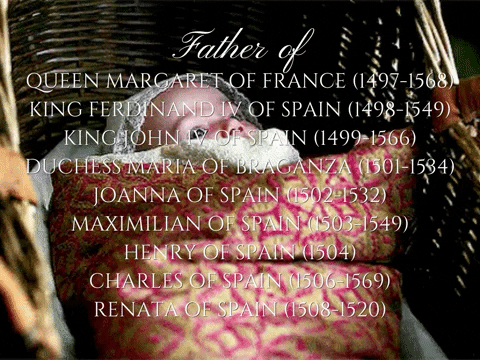
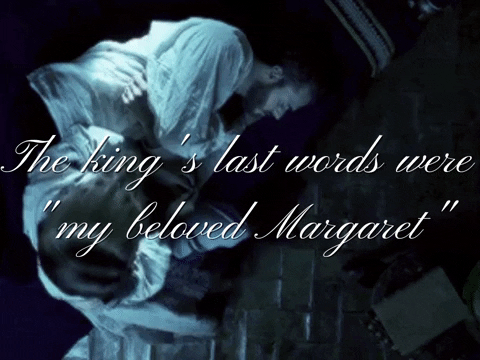
Mejores destinos para los Hijos de los Reyes Católicos- Juan I de España
Juan fue el ansiado heredero de los Reyes Católicos y pese a su delicada salud, obtuvo una estricta y amplia educación para su papel como Rey de Castilla y Aragón.
El infante fue cercano a su madre que siempre lo llamaba “mi ángel” y después de muy cercano a sus hermanas Isabella y Joanna con quienes tenia menos diferencia de edad.
Desde joven, el príncipe de Asturias fue comprometido con la archiduquesa Margaret of Austria, hija de Maximiliano I del Sacro Imperio Romano Germánico con María de Borgoña.
En 1496 John conoció a su futura esposa y su atracción fue inmediata, siendo una pareja muy pasional y unida.
Unos meses después tras días intensos de pasión, el príncipe se empezó a poner mal debido a sus intensas sesiones de cama, pero tras enterarse del embarazo de su amada esposa, John se recupero rápidamente y a finales del 1497 nació una niña que fue llamada Margaret.
John y Margaret tuvieron un matrimonio dichoso, además de fértil, llegando a tener 9 hijos en común:
Margarita de España (1497-1568) Fue la hija favorita de su padre y siempre la llamo “mi pequeña flor”. La princesa fue reina de Francia cuando se caso a los 3 años con el rey Charles IX Orlando de Francia y ambos tuvieron 5 hijos: Orlando I, Charles X, Louis, Anne y Margaret.
Fernando IV of Spain (1498-1549) Fue rey de España por 19 años. Ferdinand se caso con Elisabeth de Pomerania, pero no tuvieron hijos vivos.
El reinado de Ferdinand destaco por el florecimiento cultural y educativo, ofreciendo educación básica para los campesinos. Falleció a los 51 años de edad y fue sucedido por su hermano John IV.
Juan IV of Spain (1499-1566) Fue rey de España conocido como Ferdinand el loco por su amor por la guerra y el sexo. El rey se caso en 3 ocasiones con Hipólita María Sforza y tuvieron 3 hijos: Ferdinand V, Clemencia y Hipólita. Filiberta de Saboya y tuvieron 4 hijos: Philip, Bianca, Henry y Renata. María de Bourbon y tuvieron dos hijas: Charlotte and Margaret.
María de España (1501-1534) Fue duquesa de Braganza al casarse con Teodosio I de Braganza y tuvieron dos hijos: Teodosio II y Constancio.
Juana de España (1502-1532) Se caso con Lorenzo Salviati y tuvieron un hijo: John Salviati. Joanna destaco como mecenas de las artes y en educar a su hijo para convertirse en político.
Maximiliano de España (1503-1549) Fue virrey de Nápoles y Sicilia conocido como “el deseado”. Se caso con Dorothea de Dinamarca y tuvieron 7 hijos: Maximiliano I, Elisabeth, Catherine, Paul, Pietro, María Federica y Giovanni.
Enrique de España (1504) Falleció al día siguiente de nacer.
Carlos de España (1506-1569) Fue conde de Barcelona y regente de Cerdeña. Se caso con Isabella de Brandeburgo y tuvieron 8 hijos: Isabella, Charles Henry, Teodore, Fernanda, Ferdinand Charles, Louise, Bona, Catherine y Marcela.
Renata de España (1508-1520) Falleció durante su infancia por la tuberculosis que padeció.
John se convirtió en Rey de Castilla como Juan III en 1504 y en rey de Aragón en 1516, pero los reinos no serían unidos hasta 1520.
La salud de John no fue un gran obstáculo para el pese a que llego a padecer de gota y otros malestares físicos. Su fuerza mental y su voluntad para soportar aquellos dolores le ganaron el respeto de muchos de los nobles y caballeros que lo vieron como un rey virtuoso.
John fue llamado “El deseado” o “El virtuoso” por ser el rey que unió a Castilla y Aragón en España, siendo el primer rey de Español. También fue llamado “labio gota” por tener el labio leporino como si fuera una gota de agua.
El rey era pacifico, pero con el pasar del tiempo se convirtió en un rey despierto, con cabeza y justo a la hora de tomar decisiones importantes. Uno de sus mayores apoyos fue su esposa, Margarita a la cual pedía siempre su opinión y le dio un puesto en el consejo, además de ser su regente durante sus ausencias y enfermedades.
“El virtuoso” destaco por hacer la paz con Francia al casar a su hija favorita, Margarita con Carlos IX Orlando de Francia. Además de entablar una serie de alianzas con nobles extranjeros y vasallos de los Trastámara.
Juan también fue un padre atento y cariñoso otorgando a todos sus hijos una buena educación sin pensar en su sexo. El rey fue tachado por ser poco hombre al ser un esposo fiel y un padre muy unido a sus hijos, pero esto poco le importo, disfrutando de sus momentos familiares.
En 1520 falleció su hija pequeña Renata por la tuberculosis que padeció desde hace meses, esta muerte les afecto bastante a los reyes que guardaron luto a su querida niña. Sin embargo la amada esposa del rey, Margaret falleció tres años después por un cáncer de mama.
La muerte de su esposa fue demasiado dolorosa para el rey y se sumió en una gran depresión que le impedía comer o salir de sus habitaciones. Su hijo mayor, Ferdinand se convirtió en su regente y John decidió mudarse al Real Monasterio de Santo Tomás donde estaban enterradas su esposa e hija. El rey paso sus últimos meses allí rezando y actuando como si fuera un monje en vez de un rey.
Juan I de España acabo falleciendo en 1529 a los 51 años de edad por su pesima salud. El rey pidió en su testamento ser enterrado junto a su esposa y ambos descansan en el Real Monasterio de Santo Tomas.
Su historia de amor inspiro distintas novelas y fue llamado “El rey que murió con el corazón roto”
~~~~~~~~~~~~~~~~~~~~~~~~~~~~~~~~~~~~~~~~~~~~~~~~~~~~~~~~~~
Best destinations for the Children of the Catholic Monarchs- John I of Spain
Juan was the long-awaited heir of the Catholic Monarchs and despite his delicate health, he obtained a strict and extensive education for his role as King of Castile and Aragon.
The infant was close to his mother who always called him “my angel” and after very close to his sisters Isabella and Joanna with whom he had less age difference.
From a young age, the Prince of Asturias was betrothed to Archduchess Margaret of Austria, daughter of Maximilian I of the Holy Roman Germanic Empire with Maria of Burgundy.
In 1496 John met his future wife and his attraction was immediate, being a very passionate and united couple.
A few months later after intense days of passion, the prince began to get sick due to his intense bed sessions, but after learning of the pregnancy of his beloved wife, John recovered quickly and at the end of 1497 a girl was born who was named Margaret.
John and Margaret had a happy marriage, as well as fertile, having 9 children together:
Margaret of Spain (1497-1568) She was her father’s favorite daughter and I always call her “my little flower.” The princess was Queen of France when she married King Charles IX Orlando of France at age 3 and they both had 5 children: Orlando I, Charles X, Louis, Anne and Margaret.
Ferdinand IV of Spain (1498-1549) He was King of Spain for 19 years. Ferdinand married Elisabeth of Pomerania, but they had no living children.
Ferdinand’s reign stood out for its cultural and educational flourishing, offering basic education for peasants. He passed away at the age of 51 and was succeeded by his brother John IV.
John IV of Spain (1499-1566) He was king of Spain known as Ferdinand the madman because of his love for war and sex. The king married Ippolita Maria Sforza 3 times and they had 3 children: Ferdinand V, Clemencia and Ippolita. Philiberta of Savoy and they had 4 children: Philip, Bianca, Henry and Renata. Mary of Bourbon and they had two daughters: Charlotte and Margaret.
Maria of Spain (1501-1534) she was Duchess of Braganza when she married Theodosius I of Braganza and they had two children: Theodosius II and Contanzio.
Joanna of Spain (1502-1532) she married Lorenzo Salviati and they had a son: John Salviati. Joanna stood out as a patron of the arts and in educating her son to become a politician.
Maximilian of Spain (1503-1549) He was viceroy of Naples and Sicily known as “the desired one”. He married Dorothea of Denmark and they had 7 children: Maximilian I, Elisabeth, Catherine, Paul, Pietro, Maria Federicka and Giovanni.
Henry of Spain (1504) He died the day after he was born.
Charles of Spain (1506-1569) He was Count of Barcelona and Regent of Sardinia. He married Isabella of Brandeburg and they had 8 children: Isabella, Charles Henry, Teodore, Ferdinanda, Ferdinand Charles, Louise, Bona, Catherine and Marcela.
Renata of Spain (1508-1520) Died during her childhood due to the tuberculosis that she suffered.
John became King of Castile like John III in 1504 and King of Aragon in 1516, but the kingdoms were not united until 1520.
John’s health was not a great obstacle for him despite the fact that he suffered from gout and other physical ailments. His mental strength and his willingness to endure those pains earned him the respect of many of the nobles and knights who saw him as a virtuous king.
John was called “The desired” or “The virtuous” for being the king that united Castile and Aragon in Spain, being he the first king of Spanish. He was also called a “drop lip” for having a cleft lip like a drop of water.
The king was peaceful, but as time passed he became a king awake, with a head and just when it came to making important decisions. One of his greatest supports was his wife, Margarita, from whom he always asked her opinion and gave her a position on the council, as well as being her regent during her absences and illnesses.
“The virtuous” stood out for making peace with France by marrying his favorite daughter, Margarita, with Carlos IX Orlando of France. In addition to establishing a series of alliances with foreign nobles and vassals of the Trastamara.
John was also a caring and caring father, giving all of his children a good education without thinking about his sex. The king was crossed out for being a little man as he was a faithful husband and a father very close to his children, but this did not matter much to him, enjoying his family moments.
In 1520 his little daughter Renata died from the tuberculosis that she suffered for months, this death affected the kings who mourned her beloved girl. However, the king’s beloved wife, Margaret passed away three years later from breast cancer.
The death of his wife was too painful for the king and he fell into a great depression that prevented him from eating or leaving his rooms. His eldest son Ferdinand became his regent and John decided to move to the Royal Monastery of Santo Tomás where his wife and daughter were buried. The king spent his last months there praying and acting like he was a monk.
John I of Spain ended up dying in 1529 at the age of 51 due to his poor health. The king asked in his will to be buried with his wife and they both rest in the Royal Monastery of Santo Tomas.
His love story inspired various novels and he was called “The King Who Died with a Broken Heart”
29 notes
·
View notes
Photo



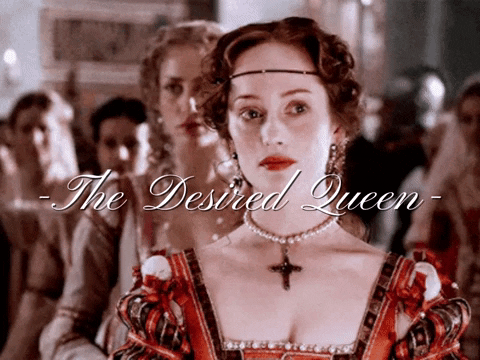

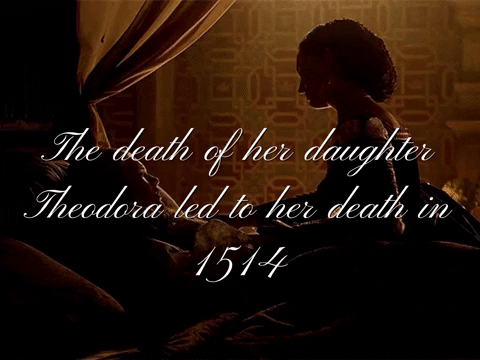
Mejores destinos para los Hijos de los Reyes Católicos- Isabella of Aragon
Isabella se había casado con el príncipe heredero de Portugal, Alfonso de Avis en 1490 y el matrimonio pese a tener fines políticos acabo siendo un matrimonio amoroso, pasional y muy feliz.
Alfonso fue siempre fiel a su esposa y la pareja compartía el lecho a menudo, desatando la gran pasión que sentían el uno por el otro.
Isabella fue popular en Portugal gracias a su belleza, su inteligencia y por ser muy culta. Sin embargo su popularidad despego cuando la infanta dio apoyo a sus padres en los últimos enfrentamientos en la reconquista de Granada, siendo este uno de sus lugares favoritos. Rápidamente fue vista como una princesa valiente, astuta y una gran aliada politica que sería de gran ayuda para los portugueses.
Alfonso e Isabella no tardaron en tener descendientes para asegurar el trono portugués, llegando a tener 9 hijos en común y llegando 6 a edad adulta:
Juan III de Portugal (1491-1543) Fue Rey de Portugal, llegando a reinar por casi 30 años. Fue conocido como “El rey santo” por su devoción a la religión y a sus numerosas donaciones a la iglesia.
Se caso en primeras nupcias con Elisabeth de Lorena teniendo con ella dos hijos, Juan IV de Portugal y Ana María. En segundas nupcias se caso con Helena Salviati y tuvieron tres hijos, Federica, Margarita y Francisco.
Isabella de Portugal (1493-1559) Fue Duquesa de Ferrara, Modena y Reggio al ser la cuarta esposa de Alfonso I de Este con el cual tuvo tres hijos: Carlos, Alfonso e Isabella. Tras enviudar en 1534 se caso con otro noble italiano y no tuvo mas hijos.
Alfonso de Portugal (1495-1521) Fue duque de Guarda por nacimiento. Se caso con Livia Gonzaga y tuvieron una hija, Julia que sería Duquesa de Guarda y se casaría con su primo Francisco de Avis.
Alfonso falleció durante un viaje en Italia debido a que contrajo la malaria y colapso durante su regreso a Portugal.
Eduardo de Portugal (1497-1566) Fue embajador portugués y militar desde su juventud. Eduardo fue el hijo favorito de su madre debido a que el mostraba un gran interés hacia la politica y las artes, siendo un joven muy culto. Eduardo se caso con su prima Juana de Trastámara y tuvieron cuatro hijos, Eduardo, Carlos, Juana y Federica.
Teodora de Portugal (1499-1513) No llego a casarse y falleció debido a su delicada salud.
Leonor de Portugal (1500-1540) Fue reina consorte de Navarra al casarse con Enrique II de Navarra y ambos tuvieron 8 hijos, Enrique III, Leonor, Francisco, Catalina, Francisca, Juana, Alfonso Enrique y Gustavo.
Leonor no destaco en la política de Navarra, pero si fue conocida por su buena amistad con la reina de Francia, Claudia de Valois.
García de Portugal (1502-1503) Falleció antes de cumplir su primer año.
Alonzo de Portugal (1504) Falleció al día siguiente de nacer.
Dulce de Portugal (1505-1544) Fue duquesa de Beja al casarse con su primo, Luis de Beja con el cual tuvo 5 hijos Luisa, Ana, Luis, Alonzo y Dulce.
Isabella se convirtió en la regente de Portugal en 1500 cuando su marido partió hacia Florencia para buscar un compromiso para sus hijos. Su regencia duro medio año y durante ese tiempo logro un avance educativo en Portugal, además de mejorar el entrenamiento militar y las condiciones en las que estaban los jóvenes que hacían servicio.
Tras el regreso de su marido, Isabella volvió a su cargo como Reina consorte y se centro en su familia los siguientes años.
Pese a ser una devota católica y dar algunas donaciones a la iglesia, Isabella dio una parte de su dinero a muchachas que eran pobres y no querían ser monjas, dándoles la oportunidad de tener un matrimonio cómodo.
En 1513 la reina volvió a quedarse como regente cuando Alfonso viajo a Francia para buscar la paz y una posible alianza. Ese mismo año su hija Teodora empezó a sufrir de serios problemas de salud y falleció en cuestión de meses a los 14 años de edad.
La muerte de Teodora le afecto bastante a Isabella que lloro día y noche por su hija, además de rezar continuamente por su descanso eterno.
El rey Alfonso VI emprendió su retorno a Portugal para llorar junto a su esposa la muerte de su hija y se sabe que los reyes se fundieron en un largo abrazo que fue acompañado de los lamentos de la reina.
Durante sus últimos meses Isabella desatendió sus obligaciones y se pasaba los días en su cama llorando por haber pedido a tres de sus hijos.
La salud de la reina se vio afectada cuando se contagio de viruela y debido a su deterioro mental y físico, Isabella no tardo en fallecer en 1514 a los 43 años de edad.
Su muerte afecto bastante a su marido que le guardo luto de por vida hasta que el falleció en 1519 por la malaria.
~~~~~~~~~~~~~~~~~~~~~~~~~~~~~~~~~~~~~~~~~~~~~~~~~~~~~~~~~~
Best destinations for the Children of the Catholic Monarchs- Isabella of Aragon
Isabella had married the crown prince of Portugal, Alfonso de Avis in 1490 and the marriage, despite having political ends, ended up being a loving, passionate and very happy marriage.
Alfonso was always faithful to his wife and the couple shared the bed often, unleashing the great passion they felt for each other.
Isabella was popular in Portugal thanks to her beauty, her intelligence and for being very cultured. However, her popularity took off when the Infanta gave support to her parents in the last confrontations in the reconquest of Granada, this being one of her favorite places. She was quickly seen as a brave, cunning princess and a great political ally who would be of great help to the Portuguese.
Alfonso and Isabella did not take long to have descendants to secure the Portuguese throne, having 9 children in common and 6 reaching adulthood:
John III of Portugal (1491-1543) He was King of Portugal, coming to reign for almost 30 years. He was known as “The Holy King” for his devotion to religion and his numerous donations to the church.
He married Elisabeth de Lorena in his first nuptials, having with her two children, Juan IV of Portugal and Ana María. In his second nuptials he married Helena Salviati and they had three children, Federica, Margarita and Francisco.
Isabella of Portugal (1493-1559) was Duchess of Ferrara, Modena and Reggio as she was the fourth wife of Alfonso I of Este with whom she had three children: Charles, Alfonso and Isabella. After being widowed in 1534, she married another Italian nobleman and had no more children.
Alfonso of Portugal (1495-1521) was Duke of Guarda by birth. He married Livia Gonzaga and they had a daughter, Julia who would be Duchess of Guarda and would marry her cousin Francisco de Avis.
Alfonso passed away during a trip in Italy due to him contracting malaria and collapse during his return to Portugal.
Duarte de Portugal (1497-1566) He was a Portuguese and military ambassador from his youth. Eduardo was the favorite son of his mother because he showed great interest in politics and the arts, he being a very cultured young man. Eduardo married his cousin Juana of Trastámara and they had four children, Eduardo, Carlos, Juana and Federica.
Teodora de Portugal (1499-1513) she did not get to marry and died due to her delicate health.
Eleanor of Portugal (1500-1540) she was queen consort of Navarre when she married Enrique II of Navarra and they both had 8 children, Henry III, Eleonor, Francis, Catherine, Franceca, Joanna, Alfonso Henry and Gustav.
Leonor did not stand out in the politics of Navarre, but she was known for her good friendship with the Queen of France, Claudia de Valois.
García of Portugal (1502-1503) He died before reaching his first year.
Alonzo of Portugal (1504) He died the day after he was born.
Dulce of Portugal (1505-1544) She was Duchess of Beja when she married her cousin, Luis de Beja, with whom she had 5 children Louise, Anne, Louis, Alonzo and Dulce.
Isabella became the regent of Portugal in 1500 when her husband left for Florence to seek an engagement for her children. Her regency lasted half a year and during that time she achieved an educational advance in Portugal, in addition to improving military training and the conditions in which the young people who served were found.
Upon the return of her husband, Isabella returned to her care as Queen consort and focused on her family for the next several years.
Despite being a devout Catholic and giving some donations to the church, Isabella gave a portion of her money to girls who were poor and did not want to be nuns, giving them the opportunity to have a comfortable marriage.
In 1513 the queen returned to stay as regent when Alfonso traveled to France to seek peace and a possible alliance. That same year her daughter Teodora began to suffer from serious health problems and she passed away in a matter of months at the age of 14.
Theodora’s death affected Isabella enough that she cried day and night for her daughter, in addition to praying continuously for her eternal rest.
King Alfonso VI undertook his return to Portugal to mourn with his wife the death of his daughter and it is known that the kings fused in a long embrace that was accompanied by the laments of the queen.
During her last months, Isabella neglected her obligations and spent her days in her bed crying for having asked for three of her children.
The queen’s health was affected when she was infected with smallpox and due to her mental and physical deterioration, Isabella soon died in 1514 at the age of 43.
Her death affected her husband enough that she mourned him for life until he died in 1519 from malaria.
32 notes
·
View notes
Photo






Aegon Targaryen “The Burning Fire” (1/3)
Aegon Targaryen known as “Aegon the Handsome” was known from his childhood as arrogant, capricious and with an obsession towards beautiful women.
He never had a good relationship with his family, especially with his younger brothers Aemon and Naerys, whom he considered weak and inferior to his. He was engaged to Naerys since she came to the world and this marriage was only desired by his father, Viserys; Aegon is known to dislike her sister and sharing her bed with her made him gag.
Aegon leaned in the lovemaking arts since he was 14 years old when he met Falena Stokeworth who “made him a man”, but this was removed from the court by order of Prince Viserys being married to Lucas Lothston and he was named Lord of Harrenhal.
Aegon continued to have passionate encounters with some court or village ladies, but despite this the marriage alliance between him and Naerys continued. However, in the year 153 a. C., his brothers outwitted the guards of their rooms and secretly married preventing the marriage with Aegon, this marriage was liked by King Aegon III who celebrated a new commitment for the couple. These events annoyed Aegon a bit stating that although he was not in love with Naerys, he was infatuated with her, but others say that it was only the whim of ruining the life of her brothers and taking possession of the sickly sister of she.
Aegon continued with his typical Casanova life having a few lovers along the way, especially he continued to maintain contact with Falena Stokeworth with whom it is believed that he had an illegitimate child.
Aegon had a lasting affair with a peasant woman named Megette with whom he had four healthy daughters, but soon his father separated the couple and thought of confining the girls in convents, but Princess Daena Targaryen agreed to take two of the daughters as her bridesmaids and looking for a future for them, Alysanne and Lily being chosen. The other girls were instructed by Princess Rhaena, but Rosey would end up escaping from those obligations by becoming a prostitute.
Aegon Targaryen “El fuego ardiente” (1/3)
Aegon Targaryen conocido como “Aegon el guapo” era conocido desde su infancia como arrogante, caprichoso y con una obsesión hacia las mujeres hermosas.
Nunca tuvo una buena relación con su familia en especial con sus hermanos menores Aemon y Naerys, a los cuales consideraba débiles e inferiores a el. Estaba prometido con Naerys desde que ella llego al mundo y este matrimonio solo era deseado por su padre, Viserys; se sabe que Aegon le desagradaba su hermana y el hecho de compartir la cama con ella le hacia arcadas.
Aegon se inclino en las artes amatorias desde sus 14 años de edad cuando conoció a Falena Stokeworth quien lo “hizo hombre”, pero esta fue alejada de la corte por orden del príncipe Viserys siendo casada con Lucas Lothston y este fue nombrado Señor de Harrenhal.
Aegon siguió teniendo encuentros apasiónales con algunas damas de la corte o pueblerinas, pero pesé a esto siguió adelante la alianza matrimonial entre el y Naerys. Sin embargo en el año 153 d. C., sus hermanos burlaron a los guardias de sus habitaciones y se casaron en secreto impidiendo el casamiento con Aegon, este casamiento fue del agrado del rey Aegon III quien festejo un nuevo compromiso por la pareja. Estos acontecimientos molestaron un poco a Aegon afirmándose que el si bien no estaba enamorado de Naerys, estaba encaprichado con ella, pero otros dicen que solo era el capricho de arruinar la vida de sus hermanos y tomar posesión de su enfermiza hermana.
Aegon siguió con su vida típica de casanova teniendo unas cuantas amantes por el camino, en especial siguió manteniendo contacto con Falena Stokeworth con la cual se cree que tuvo un hijo ilegitimo.
Aegon tuvo un romance duradero con una campesina llamada Megette con la cual tuvo cuatro hijas sanas, pero pronto su padre separo a la pareja y pensó en recluir a las niñas en conventos, pero la princesa Daena Targaryen acepto tomar a dos de las hijas como sus damas de honor y buscar algún futuro para ellas, siendo Alysanne y Lily las elegidas. Las otras niñas fueron instruidas por la princesa Rhaena, pero Rosey acabaría escapando de aquellas obligaciones convirtiéndose en prostituta.
28 notes
·
View notes
Photo

𝔻𝕒𝕖𝕟𝕒 𝕋𝕒𝕣𝕘𝕒𝕣𝕪𝕖𝕟
𝑫𝒂𝒆𝒏𝒂 𝒘𝒂𝒔 𝒂𝒍𝒘𝒂𝒚𝒔 𝒓𝒆𝒇𝒆𝒓𝒓𝒆𝒅 𝒕𝒐 𝒂𝒔 𝒕𝒉𝒆 𝒎𝒐𝒔𝒕 𝒓𝒆𝒃𝒆𝒍𝒍𝒊𝒐𝒖𝒔 𝒂𝒏𝒅 𝒔𝒄𝒂𝒏𝒅𝒂𝒍𝒐𝒖𝒔 𝒅𝒂𝒖𝒈𝒉𝒕𝒆𝒓 𝒐𝒇 𝒕𝒉𝒆 𝒍𝒂𝒕𝒆 𝒎𝒂𝒈𝒏𝒂𝒕𝒆 𝑨𝒆𝒈𝒐𝒏 𝑰𝑰𝑰.
𝑻𝒉𝒆 𝒚𝒐𝒖𝒏𝒈 𝑫𝒂𝒆𝒏𝒂 𝒘𝒂𝒔 𝒄𝒐𝒏𝒔𝒊𝒅𝒆𝒓𝒆𝒅 𝒊𝒏 𝒔𝒐𝒄𝒊𝒂𝒍 𝒏𝒆𝒕𝒘𝒐𝒓𝒌𝒔 𝒂𝒔 𝒂𝒏 𝒂𝒕𝒉𝒍𝒆𝒕𝒊𝒄 𝒚𝒐𝒖𝒏𝒈 𝒘𝒐𝒎𝒂𝒏, 𝒂 𝒍𝒐𝒗𝒆𝒓 𝒐𝒇 𝒂𝒓𝒄𝒉𝒆𝒓𝒚 𝒂𝒏𝒅 𝒎𝒐𝒖𝒏𝒕𝒂𝒊𝒏𝒆𝒆𝒓𝒊𝒏𝒈. 𝑨𝒍𝒕𝒉𝒐𝒖𝒈𝒉 𝒊𝒕 𝒊𝒔 𝒂𝒍𝒔𝒐 𝒌𝒏𝒐𝒘𝒏 𝒕𝒉𝒂𝒕 𝒔𝒉𝒆 𝒍𝒊𝒌𝒆𝒅 𝒕𝒐 𝒑𝒂𝒓𝒕𝒚 𝒂𝒏𝒅 𝒃𝒆 𝒕𝒉𝒆 𝒄𝒆𝒏𝒕𝒆𝒓 𝒐𝒇 𝒂𝒕𝒕𝒆𝒏𝒕𝒊𝒐𝒏 𝒃𝒚 𝒘𝒆𝒂𝒓𝒊𝒏𝒈 𝒍𝒖𝒙𝒖𝒓𝒊𝒐𝒖𝒔 𝒅𝒓𝒆𝒔𝒔𝒆𝒔 𝒕𝒉𝒂𝒕 𝒘𝒆𝒓𝒆 𝒅𝒊𝒔𝒂𝒑𝒑𝒓𝒐𝒗𝒆𝒅 𝒐𝒇 𝒃𝒚 𝒉𝒆𝒓 𝒐𝒍𝒅𝒆𝒓 𝒃𝒓𝒐𝒕𝒉𝒆𝒓, 𝑩𝒂𝒆𝒍𝒐𝒓.
𝑫𝒂𝒆𝒏𝒂 𝒈𝒂𝒗𝒆 𝒂 𝒍𝒐𝒕 𝒕𝒐 𝒕𝒂𝒍𝒌 𝒂𝒃𝒐𝒖𝒕 𝒘𝒉𝒆𝒏 𝒊𝒕 𝒘𝒂𝒔 𝒅𝒊𝒔𝒄𝒐𝒗𝒆𝒓𝒆𝒅 𝒕𝒉𝒂𝒕 𝒔𝒉𝒆 𝒘𝒂𝒔 𝒑𝒓𝒆𝒈𝒏𝒂𝒏𝒕 𝒂𝒏𝒅 𝒊𝒕 𝒘𝒂𝒔 𝒏𝒐𝒕 𝒌𝒏𝒐𝒘𝒏 𝒘𝒉𝒐 𝒄𝒐𝒖𝒍𝒅 𝒃𝒆 𝒕𝒉𝒆 𝒇𝒂𝒕𝒉𝒆𝒓 𝒐𝒇 𝒕𝒉𝒂𝒕 𝒃𝒂𝒃𝒚. 𝑻𝒂𝒓𝒈𝒂𝒓𝒚𝒆𝒏 𝒑𝒖𝒃𝒍𝒊𝒄𝒍𝒚 𝒓𝒆𝒇𝒖𝒔𝒆𝒅 𝒕𝒐 𝒔𝒂𝒚 𝒘𝒉𝒐 𝒕𝒉𝒆 𝒇𝒂𝒕𝒉𝒆𝒓 𝒐𝒇 𝒉𝒆𝒓 𝒄𝒉𝒊𝒍𝒅 𝒘𝒂𝒔 𝒂𝒏𝒅 𝒘𝒉𝒆𝒏 𝒔𝒉𝒆 𝒈𝒂𝒗𝒆 𝒃𝒊𝒓𝒕𝒉 𝒕𝒐 𝒂 𝒄𝒉𝒊𝒍𝒅, 𝑫𝒂𝒆𝒎𝒐𝒏 𝒘𝒂𝒔 𝒃𝒆𝒍𝒊𝒆𝒗𝒆𝒅 𝒕𝒐 𝒃𝒆 𝒕𝒉𝒆 𝒑𝒓𝒐𝒈𝒆𝒏𝒊𝒕𝒐𝒓 𝒕𝒐 𝒃𝒆 𝑨𝒆𝒈𝒐𝒏 𝑻𝒂𝒓𝒈𝒂𝒓𝒚𝒆𝒏 "𝑻𝒉𝒆 𝑼𝒏𝒘𝒐𝒓𝒕𝒉𝒚" 𝒘𝒉𝒐 𝒘𝒂𝒔 𝒌𝒏𝒐𝒘𝒏 𝒇𝒐𝒓 𝒉𝒊𝒔 𝒇𝒂𝒎𝒆 𝒂𝒔 𝒂 𝒘𝒐𝒎𝒂𝒏𝒊𝒛𝒆𝒓.
𝑯𝒐𝒘𝒆𝒗𝒆𝒓, 𝑫𝒂𝒆𝒎𝒐𝒏 𝒘𝒂𝒔 𝒑𝒂𝒔𝒔𝒆𝒅 𝒅𝒐𝒘𝒏 𝒂𝒔 𝒕𝒉𝒆 𝒔𝒐𝒏 𝒐𝒇 𝒉𝒊𝒔 𝒖𝒏𝒄𝒍𝒆, 𝑫𝒂𝒆𝒓𝒐𝒏, 𝒘𝒉𝒐 𝒑𝒖𝒃𝒍𝒊𝒄𝒍𝒚 𝒂𝒔𝒔𝒖𝒓𝒆𝒅 𝒉𝒊𝒔 𝒔𝒆𝒄𝒓𝒆𝒕 𝒓𝒐𝒎𝒂𝒏𝒄𝒆 𝒘𝒊𝒕𝒉 𝑫𝒂𝒆𝒏𝒂, 𝒎𝒂𝒌𝒊𝒏𝒈 𝒕𝒉𝒊𝒔 𝒆𝒗𝒆𝒏 𝒎𝒐𝒓𝒆 𝒔𝒄𝒂𝒏𝒅𝒂𝒍𝒐𝒖𝒔.
𝑻𝒉𝒆 𝒚𝒐𝒖𝒏𝒈 𝒘𝒐𝒎𝒂𝒏 𝒕𝒐𝒐𝒌 𝒂𝒅𝒗𝒂𝒏𝒕𝒂𝒈𝒆 𝒐𝒇 𝒕𝒉𝒊𝒔 𝒔𝒊𝒕𝒖𝒂𝒕𝒊𝒐𝒏 𝒂𝒏𝒅 𝒃𝒆𝒈𝒂𝒏 𝒂 𝒓𝒆𝒍𝒂𝒕𝒊𝒐𝒏𝒔𝒉𝒊𝒑 𝒘𝒊𝒕𝒉 𝒉𝒆𝒓 𝒐𝒍𝒅𝒆𝒓 𝒃𝒓𝒐𝒕𝒉𝒆𝒓 𝒘𝒉𝒐𝒎 𝒔𝒉𝒆 𝒂𝒅𝒎𝒊𝒓𝒆𝒅, 𝒘𝒉𝒊𝒄𝒉 𝒍𝒆𝒅 𝒕𝒉𝒆𝒎 𝒕𝒐 𝒇𝒆𝒆𝒍 𝒂 𝒉𝒖𝒈𝒆 𝒑𝒂𝒔𝒔𝒊𝒐𝒏 𝒃𝒆𝒕𝒘𝒆𝒆𝒏 𝒕𝒉𝒆𝒎. 𝑫𝒂𝒆𝒏𝒂 𝒅𝒊𝒅 𝒏𝒐𝒕 𝒈𝒆𝒕 𝒊𝒏𝒗𝒐𝒍𝒗𝒆𝒅 𝒊𝒏 𝒕𝒉𝒆 𝒑𝒂𝒍𝒂𝒄𝒆 𝒊𝒏𝒕𝒓𝒊𝒈𝒖𝒆𝒔 𝒐𝒇 𝒉𝒆𝒓 𝒄𝒐𝒖𝒔𝒊𝒏 𝑨𝒆𝒈𝒐𝒏 𝒉𝒆𝒓𝒔 𝒂𝒏𝒅 𝒔𝒉𝒆 𝒅𝒆𝒏𝒊𝒆𝒅 𝒂𝒕 𝒂𝒍𝒍 𝒕𝒊𝒎𝒆𝒔 𝒉𝒂𝒗𝒊𝒏𝒈 𝒉𝒂𝒅 𝒂𝒏 𝒂𝒇𝒇𝒂𝒊𝒓 𝒘𝒊𝒕𝒉 𝒉𝒆𝒓𝒔.
𝑫𝒂𝒆𝒏𝒂 𝒂𝒏𝒅 𝑫𝒂𝒆𝒓𝒐𝒏 𝒅𝒆𝒄𝒊𝒅𝒆𝒅 𝒕𝒐 𝒎𝒂𝒓𝒓𝒚 𝒐𝒏𝒄𝒆 𝒔𝒉𝒆 𝒘𝒂𝒔 𝒇𝒐𝒖𝒏𝒅 𝒑𝒓𝒆𝒈𝒏𝒂𝒏𝒕, 𝒃𝒖𝒕 𝒕𝒉𝒆 𝒑𝒓𝒆𝒈𝒏𝒂𝒏𝒄𝒚 𝒘𝒐𝒖𝒍𝒅 𝒏𝒐𝒕 𝒃𝒆 𝒑𝒖𝒃𝒍𝒊𝒄 𝒖𝒏𝒕𝒊𝒍 ����𝒇𝒕𝒆𝒓 𝒕𝒉𝒆𝒚 𝒘𝒆𝒓𝒆 𝒎𝒂𝒓𝒓𝒊𝒆𝒅.
𝑻𝒉𝒆 𝒄𝒐𝒖𝒑𝒍𝒆 𝒘𝒂𝒔 𝒑𝒂𝒔𝒔𝒊𝒐𝒏𝒂𝒕𝒆, 𝒂𝒍𝒕𝒉𝒐𝒖𝒈𝒉 𝒔𝒐𝒎𝒆𝒘𝒉𝒂𝒕 𝒕𝒖𝒎𝒖𝒍𝒕𝒖𝒐𝒖𝒔, 𝒂𝒄𝒄𝒐𝒓𝒅𝒊𝒏𝒈 𝒕𝒐 𝑬𝒍𝒂𝒆𝒏𝒂'𝒔 𝒔𝒊𝒔𝒕𝒆𝒓, 𝒂𝒏𝒅 𝒕𝒉𝒂𝒕 𝒕𝒉𝒆𝒊𝒓 𝒄𝒐𝒏𝒇𝒍𝒊𝒄𝒕𝒔 𝒘𝒆𝒓𝒆 𝒓𝒆𝒔𝒐𝒍𝒗𝒆𝒅 𝒘𝒊𝒕𝒉 𝒊𝒏𝒕𝒆𝒏𝒔𝒆 𝒉𝒐𝒏𝒆𝒚𝒎𝒐𝒐𝒏𝒔.
𝑫𝒂𝒆𝒓𝒐𝒏 𝒂𝒏𝒅 𝑫𝒂𝒆𝒏𝒂 𝒉𝒂𝒅 5 𝒄𝒉𝒊𝒍𝒅𝒓𝒆𝒏: 𝑫𝒂𝒆𝒓𝒐𝒏, 𝑽𝒊𝒔𝒆𝒏𝒚𝒂, 𝑽𝒂𝒍𝒆𝒓𝒊𝒐𝒏, 𝑫𝒂𝒆𝒍𝒍𝒂 𝒂𝒏𝒅 𝑳𝒂𝒆𝒏𝒂, 𝒕𝒉𝒆 𝒏𝒆𝒘 𝒎𝒐𝒕𝒉𝒆𝒓 𝒓𝒂𝒊𝒔𝒆𝒅 𝒂𝒍𝒍 𝒐𝒇 𝒉𝒆𝒓 𝒄𝒉𝒊𝒍𝒅𝒓𝒆𝒏 𝒅𝒆𝒍𝒊𝒄𝒂𝒕𝒆𝒍𝒚 𝒂𝒍𝒕𝒉𝒐𝒖𝒈𝒉 𝒔𝒉𝒆 𝒂𝒍𝒔𝒐 𝒊𝒏𝒄𝒍𝒖𝒅𝒆𝒅 𝒉𝒆𝒓𝒔, 𝒂𝒏𝒐𝒕𝒉𝒆𝒓 𝒔𝒐𝒏 𝒐𝒇 𝒉𝒆𝒓𝒔 𝑫𝒂𝒆𝒎𝒐𝒏 𝒘𝒉𝒐 𝒘𝒂𝒔 𝒉𝒆𝒓 𝒇𝒂𝒗𝒐𝒓𝒊𝒕𝒆 .
𝑪𝒖𝒓𝒓𝒆𝒏𝒕𝒍𝒚 𝑫𝒂𝒆𝒏𝒂 𝒊𝒔 𝒌𝒏𝒐𝒘𝒏 𝒂𝒔 𝒂𝒏 𝒂𝒕𝒉𝒍𝒆𝒕𝒆 𝒂𝒏𝒅 𝒂𝒓𝒄𝒉𝒆𝒓 𝒌𝒏𝒐𝒘𝒏 𝒊𝒏 𝒕𝒉𝒆 𝒔𝒐𝒄𝒊𝒂𝒍 𝒏𝒆𝒕𝒘𝒐𝒓𝒌𝒔 𝒐𝒇 𝒕𝒉𝒆 𝑺𝒆𝒗𝒆𝒏 𝑲𝒊𝒏𝒈𝒅𝒐𝒎𝒔, 𝒊𝒏 𝒂𝒅𝒅𝒊𝒕𝒊𝒐𝒏 𝒕𝒐 𝒃𝒆𝒊𝒏𝒈 𝒂𝒏 𝒊𝒏𝒇𝒍𝒖𝒆𝒏𝒄𝒆 𝒐𝒏 𝒓𝒆𝒄𝒆𝒏𝒕 𝒇𝒂𝒔𝒉𝒊𝒐𝒏𝒔.
___________________________________________________________
𝑫𝒂𝒆𝒏𝒂 𝒇𝒖𝒆 𝒔𝒊𝒆𝒎𝒑𝒓𝒆 𝒅𝒆𝒏𝒐𝒎𝒊𝒏𝒂𝒅𝒂 𝒄𝒐𝒎𝒐 𝒍𝒂 𝒉𝒊𝒋𝒂 𝒎𝒂𝒔 𝒓𝒆𝒃𝒆𝒍𝒅𝒆 𝒚 𝒆𝒔𝒄𝒂𝒏𝒅𝒂𝒍𝒐𝒔𝒂 𝒅𝒆𝒍 𝒇𝒂𝒍𝒍𝒆𝒄𝒊𝒅𝒐 𝒎𝒂𝒈𝒏𝒂𝒕𝒆 𝑨𝒆𝒈𝒐𝒏 𝑰𝑰𝑰.
𝑳𝒂 𝒋𝒐𝒗𝒆𝒏 𝑫𝒂𝒆𝒏𝒂 𝒆𝒓𝒂 𝒄𝒐𝒏𝒔𝒊𝒅𝒆𝒓𝒂𝒅𝒂 𝒆𝒏 𝒍𝒂𝒔 𝒓𝒆𝒅𝒆𝒔 𝒔𝒐𝒄𝒊𝒂𝒍𝒆𝒔 𝒄𝒐𝒎𝒐 𝒖𝒏𝒂 𝒋𝒐𝒗𝒆𝒏 𝒂𝒕𝒍é𝒕𝒊𝒄𝒂, 𝒂𝒎𝒂𝒏𝒕𝒆 𝒅𝒆𝒍 𝒕𝒊𝒓𝒐 𝒄𝒐𝒏 𝒂𝒓𝒄𝒐 𝒚 𝒅𝒆𝒍 𝒂𝒍𝒑𝒊𝒏𝒊𝒔𝒎𝒐. 𝑨𝒖𝒏 𝒒𝒖𝒆 𝒕𝒂𝒎𝒃𝒊é𝒏 𝒔𝒆 𝒔𝒂𝒃𝒆 𝒒𝒖𝒆 𝒍𝒆 𝒈𝒖𝒔𝒕𝒂𝒃𝒂𝒏 𝒍𝒂𝒔 𝒇𝒊𝒆𝒔𝒕𝒂𝒔 𝒚 𝒔𝒆𝒓 𝒆𝒍 𝒄𝒆𝒏𝒕𝒓𝒐 𝒅𝒆 𝒂𝒕𝒆𝒏𝒄𝒊ó𝒏 𝒂𝒍 𝒗𝒆𝒔𝒕𝒊𝒓 𝒍𝒖𝒋𝒐𝒔𝒐𝒔 𝒗𝒆𝒔𝒕𝒊𝒅𝒐𝒔 𝒒𝒖𝒆 𝒆𝒓𝒂𝒏 𝒅𝒆𝒔𝒂𝒑𝒓𝒐𝒃𝒂𝒅𝒐𝒔 𝒑𝒐𝒓 𝒔𝒖 𝒉𝒆𝒓𝒎𝒂𝒏𝒐 𝒎𝒂𝒚𝒐𝒓, 𝑩𝒂𝒆𝒍𝒐𝒓.
𝑫𝒂𝒆𝒏𝒂 𝒅𝒊𝒐 𝒎𝒖𝒄𝒉𝒐 𝒅𝒆 𝒒𝒖𝒆 𝒉𝒂𝒃𝒍𝒂𝒓 𝒄𝒖𝒂𝒏𝒅𝒐 𝒔𝒆 𝒅𝒆𝒔𝒄𝒖𝒃𝒓𝒊ó 𝒒𝒖𝒆 𝒔𝒆 𝒆𝒏𝒄𝒐𝒏𝒕𝒓𝒂𝒃𝒂 𝒆𝒎𝒃𝒂𝒓𝒂𝒛𝒂𝒅𝒂 𝒚 𝒏𝒐 𝒔𝒆 𝒔𝒖𝒑𝒐 𝒒𝒖𝒊𝒆𝒏 𝒑𝒐𝒅𝒓í𝒂 𝒔𝒆𝒓 𝒆𝒍 𝒑𝒂𝒅𝒓𝒆 𝒅𝒆 𝒂𝒒𝒖𝒆𝒍 𝒃𝒆𝒃é. 𝑻𝒂𝒓𝒈𝒂𝒓𝒚𝒆𝒏 𝒔𝒆 𝒏𝒆𝒈ó 𝒑ú𝒃𝒍𝒊𝒄𝒂𝒎𝒆𝒏𝒕𝒆 𝒂 𝒅𝒆𝒄𝒊𝒓 𝒒𝒖𝒊𝒆𝒏 𝒆𝒓𝒂 𝒆𝒍 𝒑𝒂𝒅𝒓𝒆 𝒅𝒆 𝒔𝒖 𝒉𝒊𝒋𝒐 𝒚 𝒄𝒖𝒂𝒏𝒅𝒐 𝒅𝒊𝒐 𝒂 𝒍𝒖𝒛 𝒂 𝒖𝒏 𝒏𝒊ñ𝒐, 𝑫𝒂𝒆𝒎𝒐𝒏 𝒔𝒆 𝒄𝒓𝒆𝒚ó 𝒒𝒖𝒆 𝒆𝒍 𝒑𝒓𝒐𝒈𝒆𝒏𝒊𝒕𝒐𝒓 𝒆𝒓𝒂 𝑨𝒆𝒈𝒐𝒏 𝑻𝒂𝒓𝒈𝒂𝒓𝒚𝒆𝒏 “𝑬𝒍 𝒊𝒏𝒅𝒊𝒈𝒏𝒐” 𝒒𝒖𝒆 𝒆𝒓𝒂 𝒄𝒐𝒏𝒐𝒄𝒊𝒅𝒐 𝒑𝒐𝒓 𝒔𝒖 𝒇𝒂𝒎𝒂 𝒄𝒐𝒎𝒐 𝒎𝒖𝒋𝒆𝒓𝒊𝒆𝒈𝒐.
𝑺𝒊𝒏 𝒆𝒎𝒃𝒂𝒓𝒈𝒐 𝑫𝒂𝒆𝒎𝒐𝒏 𝒇𝒖𝒆 𝒑𝒂𝒔𝒂𝒅𝒐 𝒄𝒐𝒎𝒐 𝒉𝒊𝒋𝒐 𝒅𝒆 𝒔𝒖 𝒕í𝒐, 𝑫𝒂𝒆𝒓𝒐𝒏 𝒆𝒍 𝒄𝒖𝒂𝒍 𝒂𝒔𝒆𝒈𝒖𝒓𝒐 𝒑ú𝒃𝒍𝒊𝒄𝒂𝒎𝒆𝒏𝒕𝒆 𝒔𝒖 𝒓𝒐𝒎𝒂𝒏𝒄𝒆 𝒔𝒆𝒄𝒓𝒆𝒕𝒐 𝒄𝒐𝒏 𝑫𝒂𝒆𝒏𝒂 𝒔𝒊𝒆𝒏𝒅𝒐 𝒆𝒔𝒕𝒐 𝒂𝒖𝒏 𝒎𝒂𝒔 𝒆𝒔𝒄𝒂𝒏𝒅𝒂𝒍𝒐𝒔𝒐.
𝑳𝒂 𝒋𝒐𝒗𝒆𝒏 𝒂𝒑𝒓𝒐𝒗𝒆𝒄𝒉𝒐 𝒆𝒔𝒕𝒂 𝒔𝒊𝒕𝒖𝒂𝒄𝒊ó𝒏 𝒚 𝒄𝒐𝒎𝒆𝒏𝒛ó 𝒖𝒏𝒂 𝒓𝒆𝒍𝒂𝒄𝒊ó𝒏 𝒄𝒐𝒏 𝒔𝒖 𝒉𝒆𝒓𝒎𝒂𝒏𝒐 𝒎𝒂𝒚𝒐𝒓 𝒂𝒍 𝒄𝒖𝒂𝒍 𝒂𝒅𝒎𝒊𝒓𝒂𝒃𝒂, 𝒍𝒐 𝒒𝒖𝒆 𝒍𝒍𝒆𝒗𝒐 𝒂 𝒒𝒖𝒆 𝒔𝒊𝒏𝒕𝒊𝒆𝒓𝒂𝒏 𝒖𝒏𝒂 𝒆𝒏𝒐𝒓𝒎𝒆 𝒑𝒂𝒔𝒊ó𝒏 𝒆𝒏𝒕𝒓𝒆 𝒆𝒍𝒍𝒐𝒔. 𝑫𝒂𝒆𝒏𝒂 𝒏𝒐 𝒔𝒆 𝒊𝒏𝒗𝒐𝒍𝒖𝒄𝒓𝒐 𝒆𝒏 𝒍𝒂𝒔 𝒊𝒏𝒕𝒓𝒊𝒈𝒂𝒔 𝒑𝒂𝒍𝒂𝒄𝒊𝒆𝒈𝒂𝒔 𝒅𝒆 𝒔𝒖 𝒑𝒓𝒊𝒎𝒐 𝑨𝒆𝒈𝒐𝒏 𝒚 𝒏𝒆𝒈ó 𝒆𝒏 𝒕𝒐𝒅𝒐 𝒎𝒐𝒎𝒆𝒏𝒕𝒐 𝒉𝒂𝒃𝒆𝒓 𝒎𝒂𝒏𝒕𝒆𝒏𝒊𝒅𝒐 𝒖𝒏 𝒓𝒐𝒎𝒂𝒏𝒄𝒆 𝒄𝒐𝒏 𝒆𝒍.
𝑫𝒂𝒆𝒏𝒂 𝒚 𝑫𝒂𝒆𝒓𝒐𝒏 𝒅𝒆𝒄𝒊𝒅𝒊𝒆𝒓𝒐𝒏 𝒄𝒂𝒔𝒂𝒓𝒔𝒆 𝒖𝒏𝒂 𝒗𝒆𝒛 𝒒𝒖𝒆 𝒆𝒍𝒍𝒂 𝒔𝒆 𝒆𝒏𝒄𝒐𝒏𝒕𝒓ó 𝒆𝒎𝒃𝒂𝒓𝒂𝒛𝒂𝒅𝒂, 𝒑𝒆𝒓𝒐 𝒆𝒍 𝒆𝒎𝒃𝒂𝒓𝒂𝒛𝒐 𝒏𝒐 𝒔𝒆𝒓í𝒂 𝒑𝒖𝒃𝒍𝒊𝒄𝒐 𝒉𝒂𝒔𝒕𝒂 𝒅𝒆𝒔𝒑𝒖é𝒔 𝒅𝒆 𝒄𝒂𝒔𝒂𝒓𝒔𝒆.
𝑳𝒂 𝒑𝒂𝒓𝒆𝒋𝒂 𝒇𝒖𝒆 𝒑𝒂𝒔𝒊𝒐𝒏𝒂𝒍 𝒂𝒖𝒏 𝒒𝒖𝒆 𝒂𝒍𝒈𝒐 𝒕𝒖𝒎𝒖𝒍𝒕𝒖𝒐𝒔𝒂 𝒔𝒆𝒈ú𝒏 𝒄𝒐𝒎𝒆𝒏𝒕𝒐 𝒍𝒂 𝒉𝒆𝒓𝒎𝒂𝒏𝒂 𝒅𝒆 𝒆𝒔𝒕𝒐, 𝑬𝒍𝒂𝒆𝒏𝒂 𝒚 𝒒𝒖𝒆 𝒔𝒖𝒔 𝒄𝒐𝒏𝒇𝒍𝒊𝒄𝒕𝒐𝒔 𝒔𝒆 𝒔𝒐𝒍𝒖𝒄𝒊𝒐𝒏𝒂𝒃𝒂𝒏 𝒄𝒐𝒏 𝒊𝒏𝒕𝒆𝒏𝒔𝒂𝒔 𝒍𝒖𝒏𝒂𝒔 𝒅𝒆 𝒎𝒊𝒆𝒍.
𝑫𝒂𝒆𝒓𝒐𝒏 𝒚 𝑫𝒂𝒆𝒏𝒂 𝒕𝒖𝒗𝒊𝒆𝒓𝒐𝒏 5 𝒉𝒊𝒋𝒐𝒔: 𝑫𝒂𝒆𝒓𝒐𝒏, 𝑽𝒊𝒔𝒆𝒏𝒚𝒂, 𝑽𝒂𝒍𝒆𝒓𝒊𝒐𝒏, 𝑫𝒂𝒆𝒍𝒍𝒂 𝒚 𝑳𝒂𝒆𝒏𝒂, 𝒍𝒂 𝒏𝒖𝒆𝒗𝒂 𝒎𝒂𝒅𝒓𝒆 𝒄𝒓í𝒐 𝒂 𝒕𝒐𝒅𝒐𝒔 𝒔𝒖𝒔 𝒉𝒊𝒋𝒐𝒔 𝒅𝒆𝒍𝒊𝒄𝒂𝒅𝒂𝒎𝒆𝒏𝒕𝒆 𝒂𝒖𝒏 𝒒𝒖𝒆 𝒕𝒂𝒎𝒃𝒊é𝒏 𝒍𝒍𝒆𝒈𝒐 𝒂 𝒊𝒏𝒄𝒍𝒖𝒊𝒓 𝒂 𝒔𝒖 𝒐𝒕𝒓𝒐 𝒉𝒊𝒋𝒐 𝑫𝒂𝒆𝒎𝒐𝒏 𝒒𝒖𝒆 𝒆𝒓𝒂 𝒔𝒖 𝒇𝒂𝒗𝒐𝒓𝒊𝒕𝒐.
𝑨𝒄𝒕𝒖𝒂𝒍𝒎𝒆𝒏𝒕𝒆 𝑫𝒂𝒆𝒏𝒂 𝒆𝒔 𝒄𝒐𝒏𝒐𝒄𝒊𝒅𝒂 𝒄𝒐𝒎𝒐 𝒖𝒏𝒂 𝒂𝒕𝒍𝒆𝒕𝒂 𝒚 𝒂𝒓𝒒𝒖𝒆𝒓𝒂 𝒄𝒐𝒏𝒐𝒄𝒊𝒅𝒂 𝒆𝒏 𝒍𝒂𝒔 𝒓𝒆𝒅𝒆𝒔 𝒔𝒐𝒄𝒊𝒂𝒍𝒆𝒔 𝒅𝒆 𝒍𝒐𝒔 𝑺𝒊𝒆𝒕𝒆 𝑹𝒆𝒊𝒏𝒐𝒔, 𝒂𝒅𝒆𝒎á𝒔 𝒅𝒆 𝒔𝒆𝒓 𝒕𝒐𝒅𝒂 𝒖𝒏𝒂 𝒊𝒏𝒇𝒍𝒖𝒆𝒏𝒄𝒊𝒂 𝒆𝒏 𝒍𝒂𝒔 𝒎𝒐𝒅𝒂𝒔 𝒓𝒆𝒄𝒊𝒆𝒏𝒕𝒆𝒔.
5 notes
·
View notes
Photo

ℕ𝕒𝕖𝕣𝕪𝕤 𝕋𝕒𝕣𝕘𝕒𝕣𝕪𝕖𝕟
𝑵𝒂𝒆𝒓𝒚𝒔 𝑻𝒂𝒓𝒈𝒂𝒓𝒚𝒆𝒏 𝒊𝒔 𝒄𝒖𝒓𝒓𝒆𝒏𝒕𝒍𝒚 𝒌𝒏𝒐𝒘𝒏 𝒂𝒔 𝒕𝒉𝒆 𝒖𝒏𝒇𝒐𝒓𝒕𝒖𝒏𝒂𝒕𝒆 𝒆𝒙-𝒘𝒊𝒇𝒆 𝒐𝒇 𝒕𝒉𝒆 𝒎𝒂𝒈𝒏𝒂𝒕𝒆 𝑨𝒆𝒈𝒐𝒏 𝑻𝒂𝒓𝒈𝒂𝒓𝒚𝒆𝒏, 𝒄𝒂𝒍𝒍𝒆𝒅 "𝑼𝒏𝒘𝒐𝒓𝒕𝒉𝒚" 𝒊𝒏 𝒕𝒉𝒆 𝒔𝒐𝒄𝒊𝒂𝒍 𝒘𝒐𝒓𝒍𝒅.
𝑻𝒉𝒆 𝒚𝒐𝒖𝒏𝒈 𝒘𝒐𝒎𝒂𝒏 𝒔𝒉𝒆 𝒘𝒂𝒔 𝒇𝒐𝒓𝒄𝒆𝒅 𝒕𝒐 𝒎𝒂𝒓𝒓𝒚 𝒉𝒆𝒓 𝒃𝒓𝒐𝒕𝒉𝒆𝒓 𝒇𝒓𝒐𝒎 𝒕𝒉𝒆 𝒂𝒈𝒆 𝒐𝒇 16 𝒂𝒏𝒅 𝒔𝒉𝒆 𝒘𝒂𝒔 𝒇𝒐𝒓𝒄𝒆𝒅 𝒕𝒐 𝒃𝒆𝒂𝒓 𝒄𝒉𝒊𝒍𝒅𝒓𝒆𝒏, 𝒉𝒂𝒗𝒊𝒏𝒈 5 𝒄𝒉𝒊𝒍𝒅𝒓𝒆𝒏 𝒘𝒊𝒕𝒉 𝑨𝒆𝒈𝒐𝒏: 𝑫𝒂𝒆𝒓𝒐𝒏, 𝑽𝒊𝒔𝒆𝒓𝒚𝒔, 𝑨𝒆𝒏𝒚𝒔, 𝑫𝒂𝒆𝒏𝒆𝒓𝒚𝒔 𝒂𝒏𝒅 𝑨𝒆𝒈𝒐𝒏.
𝑺𝒉𝒆 𝒔𝒕𝒐𝒐𝒅 𝒐𝒖𝒕 𝒂𝒔 𝒂𝒏 𝒂𝒕𝒕𝒆𝒏𝒕𝒊𝒗𝒆 𝒂𝒏𝒅 𝒗𝒆𝒓𝒚 𝒍𝒐𝒗𝒊𝒏𝒈 𝒎𝒐𝒕𝒉𝒆𝒓, 𝒃𝒆𝒊𝒏𝒈 𝒔𝒆𝒆𝒏 𝒂𝒔 𝒂 𝒑𝒆𝒓𝒇𝒆𝒄𝒕 𝒉𝒐𝒖𝒔𝒆𝒘𝒊𝒇𝒆 𝒅𝒆𝒔𝒑𝒊𝒕𝒆 𝒉𝒆𝒓 𝒎𝒂𝒓𝒊𝒕𝒂𝒍 𝒖𝒏𝒉𝒂��𝒑𝒊𝒏𝒆𝒔𝒔. 𝑵𝒂𝒆𝒓𝒚𝒔 𝒂𝒍𝒘𝒂𝒚𝒔 𝒔𝒉𝒐𝒘𝒆𝒅 𝒍𝒐𝒗𝒆 𝒕𝒐 𝒉𝒆𝒓 𝒄𝒉𝒊𝒍𝒅𝒓𝒆𝒏 𝒂𝒏𝒅 𝒉𝒆𝒓𝒔 𝒉𝒆𝒓 𝒔𝒐𝒏 𝑫𝒂𝒆𝒓𝒐𝒏 𝒂𝒍𝒘𝒂𝒚𝒔 𝒅𝒆𝒄𝒍𝒂𝒓𝒆𝒅 𝒕𝒉𝒂𝒕 𝒉𝒆𝒓 𝒎𝒐𝒕𝒉𝒆𝒓 𝒓𝒆𝒄𝒆𝒊𝒗𝒆𝒅 𝒓𝒖𝒅𝒆𝒏𝒆𝒔𝒔 𝒂𝒏𝒅 𝒑𝒖𝒏𝒊𝒔𝒉𝒎𝒆𝒏𝒕 𝒇𝒓𝒐𝒎 𝒉𝒆𝒓 𝒇𝒂𝒕𝒉𝒆𝒓 𝒇𝒐𝒓 𝒕𝒉𝒆𝒎.
𝑵𝒂𝒆𝒓𝒚𝒔 𝒄𝒂𝒎𝒆 𝒕𝒐 𝒂𝒇𝒇𝒊𝒓𝒎 𝒕𝒉𝒂𝒕 𝒔𝒉𝒆 𝒆𝒏𝒅𝒖𝒓𝒆𝒅 𝒂𝒍𝒍 𝒌𝒊𝒏𝒅𝒔 𝒐𝒇 𝒂𝒃𝒖𝒔𝒆 𝒇𝒓𝒐𝒎 𝒉𝒆𝒓 𝒉𝒖𝒔𝒃𝒂𝒏𝒅 𝒂𝒏𝒅 𝒔𝒖𝒑𝒑𝒐𝒓𝒕𝒆𝒅 𝒆𝒂𝒄𝒉 𝒐𝒇 𝒉𝒆𝒓 𝒍𝒐𝒗𝒆𝒓𝒔, 𝒕𝒉𝒆 𝒐𝒏𝒆 𝒘𝒉𝒐 𝒉𝒂𝒕𝒆𝒅 𝒕𝒉𝒆 𝒎𝒐𝒅𝒆𝒍 𝑩𝒂𝒓𝒃𝒂 𝑩𝒓𝒂𝒄𝒌𝒆𝒏 𝒕𝒉𝒆 𝒎𝒐𝒔𝒕.
𝑨𝒆𝒈𝒐𝒏 𝒂𝒏𝒅 𝑵𝒂𝒆𝒓𝒚𝒔 𝒘𝒆𝒓𝒆 𝒕𝒂𝒍𝒌𝒊𝒏𝒈 𝒂𝒃𝒐𝒖𝒕 𝒘𝒉𝒆𝒏 𝒕𝒉𝒆𝒊𝒓 𝒅𝒆𝒄𝒊𝒔𝒊𝒐𝒏 𝒕𝒐 𝒅𝒊𝒗𝒐𝒓𝒄𝒆 𝒔𝒑𝒓𝒆𝒂𝒅, 𝒔𝒉𝒆 𝒃𝒆𝒊𝒏𝒈 𝒕𝒉𝒆 𝒘𝒐𝒎𝒂𝒏 𝒔𝒖𝒑𝒑𝒐𝒓𝒕𝒆𝒅 𝒃𝒚 𝒎𝒂𝒏𝒚 𝒐𝒕𝒉𝒆𝒓𝒔 𝒊𝒏 𝒐𝒓𝒅𝒆𝒓 𝒕𝒐 𝒈𝒆𝒕 𝒇𝒖𝒍𝒍 𝒄𝒖𝒔𝒕𝒐𝒅𝒚 𝒐𝒇 𝒉𝒆𝒓 𝒄𝒉𝒊𝒍𝒅𝒓𝒆𝒏 𝒂𝒏𝒅 𝒉𝒆𝒓 𝒐𝒘𝒏 𝒊𝒏𝒉𝒆𝒓𝒊𝒕𝒂𝒏𝒄𝒆 𝒇𝒓𝒐𝒎 𝒉𝒆𝒓 𝒇𝒂𝒕𝒉𝒆𝒓.
𝑻𝒉𝒆 𝒎𝒊𝒍𝒍𝒊𝒐𝒏𝒂𝒊𝒓𝒆 𝒄𝒐𝒖𝒑𝒍𝒆 𝒈𝒐𝒕 𝒂 𝒅𝒊𝒗𝒐𝒓𝒄𝒆 𝒂𝒏𝒅 𝑵𝒂𝒆𝒓𝒚𝒔 𝒐𝒃𝒕𝒂𝒊𝒏𝒆𝒅 𝒄𝒖𝒔𝒕𝒐𝒅𝒚 𝒐𝒇 𝒂𝒍𝒍 𝒉𝒆𝒓 𝒄𝒉𝒊𝒍𝒅𝒓𝒆𝒏 𝒕𝒉𝒂𝒏𝒌𝒔 𝒕𝒐 𝒕𝒉𝒆 𝒔𝒕𝒂𝒕𝒆𝒎𝒆𝒏𝒕𝒔 𝒎𝒂𝒅𝒆 𝒃𝒚 𝒕𝒉𝒆 𝒆𝒍𝒅𝒆𝒓𝒔 𝑫𝒂𝒆𝒓𝒐𝒏 𝒂𝒏𝒅 𝑽𝒊𝒔𝒆𝒓𝒚𝒔 𝒂𝒃𝒐𝒖𝒕 𝒕𝒉𝒆 𝒏𝒆𝒈𝒍𝒊𝒈𝒆𝒏𝒄𝒆 𝒐𝒇 𝒉𝒆𝒓 𝒇𝒂𝒕𝒉𝒆𝒓.
𝑪𝒖𝒓𝒓𝒆𝒏𝒕𝒍𝒚 𝒔𝒉𝒆 𝑵𝒂𝒆𝒓𝒚𝒔 𝒍𝒊𝒗𝒆𝒔 𝒊𝒏 𝒉𝒆𝒓 𝒐𝒘𝒏 𝒉𝒐𝒎𝒆 𝒘𝒉𝒆𝒓𝒆 𝒔𝒉𝒆 𝒇𝒊𝒏𝒂𝒍𝒍𝒚 𝒉𝒂𝒅 𝒂𝒄𝒄𝒆𝒔𝒔 𝒕𝒐 𝒉𝒆𝒓 𝒆𝒅𝒖𝒄𝒂𝒕𝒊𝒐𝒏 𝒕𝒉𝒂𝒕 𝒘𝒂𝒔 𝒐𝒏𝒄𝒆 𝒅𝒆𝒏𝒊𝒆𝒅 𝒂𝒏𝒅 𝒔𝒕𝒖𝒅𝒊𝒆𝒅 𝒄𝒉𝒊𝒍𝒅 𝒑𝒔𝒚𝒄𝒉𝒐𝒍𝒐𝒈𝒚 𝒕𝒐 𝒘𝒐𝒓𝒌 𝒘𝒊𝒕𝒉 𝒇𝒂𝒎𝒊𝒍𝒊𝒆𝒔 𝒘𝒉𝒐 𝒘𝒆𝒓𝒆 𝒊𝒏 𝒉𝒆𝒓 𝒔𝒊𝒕𝒖𝒂𝒕𝒊𝒐𝒏.
𝑻𝒂𝒓𝒈𝒂𝒓𝒚𝒆𝒏 𝒇𝒐𝒖𝒏𝒅 𝒍𝒐𝒗𝒆 𝒂𝒈𝒂𝒊𝒏 𝒊𝒏 𝒉𝒆𝒓 𝒐𝒕𝒉𝒆𝒓 𝒃𝒓𝒐𝒕𝒉𝒆𝒓, 𝑨𝒆𝒎𝒐𝒏 𝒘𝒉𝒐𝒎 𝒔𝒉𝒆 𝒎𝒂𝒓𝒓𝒊𝒆𝒅 𝒕𝒘𝒐 𝒚𝒆𝒂𝒓𝒔 𝒂𝒇𝒕𝒆𝒓 𝒅𝒊𝒗𝒐𝒓𝒄𝒊𝒏𝒈 𝒂𝒏𝒅 𝒕𝒉𝒆𝒚 𝒉𝒂𝒅 2 𝒄𝒉𝒊𝒍𝒅𝒓𝒆𝒏: 𝑨𝒆𝒎𝒐𝒏 𝒂𝒏𝒅 𝑨𝒆𝒏𝒂.
𝑵𝒂𝒆𝒓𝒚𝒔 𝒂𝒍𝒔𝒐 𝒘𝒓𝒊𝒕𝒆𝒔 𝒉𝒆𝒓 𝒐𝒘𝒏 𝒃𝒐𝒐𝒌𝒔 𝒐𝒏 𝒓𝒆𝒍𝒊𝒈𝒊𝒐𝒏, 𝒅𝒐𝒎𝒆𝒔𝒕𝒊𝒄 𝒂𝒃𝒖𝒔𝒆, 𝒂𝒏𝒅 𝒄𝒉𝒊𝒍𝒅 𝒃𝒆𝒉𝒂𝒗𝒊𝒐𝒓, 𝒘𝒊𝒕𝒉 𝒉𝒆𝒓 𝒃𝒐𝒐𝒌𝒔 𝒃𝒆𝒊𝒏𝒈 𝒃𝒐𝒕𝒉 𝒂𝒄𝒄𝒆𝒑𝒕𝒆𝒅 𝒂𝒏𝒅 𝒄𝒓𝒊𝒕𝒊𝒄𝒊𝒛𝒆𝒅.
_____________________________________________________________
𝑵𝒂𝒆𝒓𝒚𝒔 𝑻𝒂𝒓𝒈𝒂𝒓𝒚𝒆𝒏 𝒆𝒔 𝒂𝒄𝒕𝒖𝒂𝒍𝒎𝒆𝒏𝒕𝒆 𝒄𝒐𝒏𝒐𝒄𝒊𝒅𝒂 𝒄𝒐𝒎𝒐 𝒍𝒂 𝒅𝒆𝒔𝒅𝒊𝒄𝒉𝒂𝒅𝒂 𝒆𝒙-𝒆𝒔𝒑𝒐𝒔𝒂 𝒅𝒆𝒍 𝒎𝒂𝒈𝒏𝒂𝒕𝒆 𝑨𝒆𝒈𝒐𝒏 𝑻𝒂𝒓𝒈𝒂𝒓𝒚𝒆𝒏, 𝒍𝒍𝒂𝒎𝒂𝒅𝒐 “𝑰𝒏𝒅𝒊𝒈𝒏𝒐” 𝒆𝒏 𝒆𝒍 𝒎𝒖𝒏𝒅𝒐 𝒔𝒐𝒄𝒊𝒂𝒍.
𝑳𝒂 𝒋𝒐𝒗𝒆𝒏 𝒇𝒖𝒆 𝒇𝒐𝒓𝒛𝒂𝒅𝒂 𝒂 𝒄𝒂𝒔𝒂𝒓𝒔𝒆 𝒄𝒐𝒏 𝒔𝒖 𝒉𝒆𝒓𝒎𝒂𝒏𝒐 𝒅𝒆𝒔𝒅𝒆 𝒍𝒐𝒔 16 𝒂ñ𝒐𝒔 𝒚 𝒇𝒖𝒆 𝒇𝒐𝒓𝒛𝒂𝒅𝒂 𝒂 𝒅𝒂𝒓𝒍𝒆 𝒉𝒊𝒋𝒐𝒔, 𝒕𝒆𝒏𝒊𝒆𝒏𝒅𝒐 5 𝒉𝒊𝒋𝒐𝒔 𝒄𝒐𝒏 𝑨𝒆𝒈𝒐𝒏: 𝑫𝒂𝒆𝒓𝒐𝒏, 𝑽𝒊𝒔𝒆𝒓𝒚𝒔, 𝑨𝒆𝒏𝒚𝒔, 𝑫𝒂𝒆𝒏𝒆𝒓𝒚𝒔 𝒚 𝑨𝒆𝒈𝒐𝒏.
𝑫𝒆𝒔𝒕𝒂𝒄𝒂𝒃𝒂 𝒄𝒐𝒎𝒐 𝒖𝒏𝒂 𝒎𝒂𝒅𝒓𝒆 𝒂𝒕𝒆𝒏𝒕𝒂 𝒚 𝒎𝒖𝒚 𝒄𝒂𝒓𝒊ñ𝒐𝒔𝒂, 𝒔𝒊𝒆𝒏𝒅𝒐 𝒗𝒊𝒔𝒕𝒂 𝒄𝒐𝒎𝒐 𝒖𝒏𝒂 𝒂𝒎𝒂 𝒅𝒆 𝒄𝒂𝒔𝒂 𝒑𝒆𝒓𝒇𝒆𝒄𝒕𝒂 𝒑𝒆𝒔𝒆 𝒂 𝒔𝒖 𝒊𝒏𝒇𝒆𝒍𝒊𝒄𝒊𝒅𝒂𝒅 𝒄𝒐𝒏𝒚𝒖𝒈𝒂𝒍. 𝑵𝒂𝒆𝒓𝒚𝒔 𝒔𝒊𝒆𝒎𝒑𝒓𝒆 𝒎𝒐𝒔𝒕𝒓𝒐 𝒂𝒎𝒐𝒓 𝒂 𝒔𝒖𝒔 ��𝒊𝒋𝒐𝒔 𝒚 𝒔𝒖 𝒉𝒊𝒋𝒐 𝑫𝒂𝒆𝒓𝒐𝒏 𝒔𝒊𝒆𝒎𝒑𝒓𝒆 𝒅𝒆𝒄𝒍𝒂𝒓𝒐 𝒒𝒖𝒆 𝒔𝒖 𝒎𝒂𝒅𝒓𝒆 𝒓𝒆𝒄𝒊𝒃í𝒂 𝒍𝒐𝒔 𝒅𝒆𝒔𝒑𝒍𝒂𝒏𝒕𝒆𝒔 𝒚 𝒄𝒂𝒔𝒕𝒊𝒈𝒐𝒔 𝒑𝒐𝒓 𝒑𝒂𝒓𝒕𝒆 𝒅𝒆 𝒔𝒖 𝒑𝒂𝒅𝒓𝒆 𝒑𝒐𝒓 𝒆𝒍𝒍𝒐𝒔.
𝑵𝒂𝒆𝒓𝒚𝒔 𝒍𝒍𝒆𝒈𝒐 𝒂𝒇𝒊𝒓𝒎𝒂𝒓 𝒒𝒖𝒆 𝒔𝒐𝒑𝒐𝒓𝒕𝒐 𝒕𝒐𝒅𝒂 𝒄𝒍𝒂𝒔𝒆 𝒅𝒆 𝒂𝒃𝒖𝒔𝒐𝒔 𝒑𝒐𝒓 𝒑𝒂𝒓𝒕𝒆 𝒅𝒆 𝒔𝒖 𝒎𝒂𝒓𝒊𝒅𝒐 𝒚 𝒔𝒐𝒑𝒐𝒓𝒕𝒂𝒃𝒂 𝒂 𝒄𝒂𝒅𝒂 𝒖𝒏𝒂 𝒅𝒆 𝒔𝒖𝒔 𝒂𝒎𝒂𝒏𝒕𝒆𝒔, 𝒔𝒊𝒆𝒏𝒅𝒐 𝒍𝒂 𝒒𝒖𝒆 𝒎𝒂𝒔 𝒐𝒅𝒊𝒂𝒃𝒂 𝒍𝒂 𝒎𝒐𝒅𝒆𝒍𝒐 𝑩𝒂𝒓𝒃𝒂 𝑩𝒓𝒂𝒄𝒌𝒆𝒏.
𝑨𝒆𝒈𝒐𝒏 𝒚 𝑵𝒂𝒆𝒓𝒚𝒔 𝒅𝒊𝒆𝒓𝒐𝒏 𝒅𝒆 𝒒𝒖𝒆 𝒉𝒂𝒃𝒍𝒂𝒓 𝒄𝒖𝒂𝒏𝒅𝒐 𝒔𝒆 𝒅𝒊𝒇𝒖𝒏𝒅𝒊ó 𝒔𝒖 𝒅𝒆𝒄𝒊𝒔𝒊ó𝒏 𝒅𝒆 𝒅𝒊𝒗𝒐𝒓𝒄𝒊𝒂𝒓𝒔𝒆, 𝒔𝒊𝒆𝒏𝒅𝒐 𝒍𝒂 𝒎𝒖𝒋𝒆𝒓 𝒂𝒑𝒐𝒚𝒂𝒅𝒂 𝒑𝒐𝒓 𝒎𝒖𝒄𝒉𝒂𝒔 𝒐𝒕𝒓𝒂𝒔 𝒑𝒂𝒓𝒂 𝒑𝒐𝒅𝒆𝒓 𝒄𝒐𝒏𝒔𝒆𝒈𝒖𝒊𝒓 𝒍𝒂 𝒄𝒖𝒔𝒕𝒐𝒅𝒊𝒂 𝒄𝒐𝒎𝒑𝒍𝒆𝒕𝒂 𝒅𝒆 𝒔𝒖𝒔 𝒉𝒊𝒋𝒐𝒔 𝒚 𝒔𝒖 𝒑𝒓𝒐𝒑𝒊𝒂 𝒉𝒆𝒓𝒆𝒏𝒄𝒊𝒂 𝒑𝒐𝒓 𝒑𝒂𝒓𝒕𝒆 𝒅𝒆 𝒔𝒖 𝒑𝒂𝒅𝒓𝒆.
𝑳𝒂 𝒑𝒂𝒓𝒆𝒋𝒂 𝒎𝒊𝒍𝒍𝒐𝒏𝒂𝒓𝒊𝒂 𝒄𝒐𝒏𝒔𝒊𝒈𝒖𝒊𝒆𝒓𝒐𝒏 𝒆𝒍 𝒅𝒊𝒗𝒐𝒓𝒄𝒊𝒐 𝒚 𝑵𝒂𝒆𝒓𝒚𝒔 𝒐𝒃𝒕𝒖𝒗𝒐 𝒍𝒂 𝒄𝒖𝒔𝒕𝒐𝒅𝒊𝒂 𝒅𝒆 𝒕𝒐𝒅𝒐𝒔 𝒔𝒖𝒔 𝒉𝒊𝒋𝒐𝒔 𝒈𝒓𝒂𝒄𝒊𝒂𝒔 𝒂 𝒍𝒂𝒔 𝒅𝒆𝒄𝒍𝒂𝒓𝒂𝒄𝒊𝒐𝒏𝒆𝒔 𝒒𝒖𝒆 𝒉𝒊𝒄𝒊𝒆𝒓𝒐𝒏 𝒍𝒐𝒔 𝒎𝒂𝒚𝒐𝒓𝒆𝒔 𝑫𝒂𝒆𝒓𝒐𝒏 𝒚 𝑽𝒊𝒔𝒆𝒓𝒚𝒔 𝒔𝒐𝒃𝒓𝒆 𝒍𝒂 𝒏𝒆𝒈𝒍𝒊𝒈𝒆𝒏𝒄𝒊𝒂 𝒅𝒆 𝒔𝒖 𝒑𝒂𝒅𝒓𝒆.
𝑨𝒄𝒕𝒖𝒂𝒍𝒎𝒆𝒏𝒕𝒆 𝑵𝒂𝒆𝒓𝒚𝒔 𝒗𝒊𝒗𝒆 𝒆𝒏 𝒔𝒖 𝒑𝒓𝒐𝒑𝒊𝒐 𝒉𝒐𝒈𝒂𝒓 𝒅𝒐𝒏𝒅𝒆 𝒑𝒐𝒓 𝒇𝒊𝒏 𝒕𝒖𝒗𝒐 𝒆𝒍 𝒂𝒄𝒄𝒆𝒔𝒐 𝒂 𝒔𝒖 𝒆𝒅𝒖𝒄𝒂𝒄𝒊ó𝒏 𝒒𝒖𝒆 𝒖𝒏𝒂 𝒗𝒆𝒛 𝒍𝒆 𝒇𝒖𝒆 𝒏𝒆𝒈𝒂𝒅𝒂 𝒚 𝒆𝒔𝒕𝒖𝒅𝒊𝒐 𝒑𝒔𝒊𝒄𝒐𝒍𝒐𝒈í𝒂 𝒊𝒏𝒇𝒂𝒏𝒕𝒊𝒍 𝒑𝒂𝒓𝒂 𝒕𝒓𝒂𝒃𝒂𝒋𝒂𝒓 𝒄𝒐𝒏 𝒇𝒂𝒎𝒊𝒍𝒊𝒂𝒔 𝒒𝒖𝒆 𝒆𝒔𝒕𝒖𝒗𝒊𝒆𝒓𝒐𝒏 𝒆𝒏 𝒔𝒖 𝒔𝒊𝒕𝒖𝒂𝒄𝒊ó𝒏.
𝑻𝒂𝒓𝒈𝒂𝒓𝒚𝒆𝒏 𝒗𝒐𝒍𝒗𝒊ó 𝒂 𝒆𝒏𝒄𝒐𝒏𝒕𝒓𝒂𝒓 𝒆𝒍 𝒂𝒎𝒐𝒓 𝒆𝒏 𝒔𝒖 𝒐𝒕𝒓𝒐 𝒉𝒆𝒓𝒎𝒂𝒏𝒐, 𝑨𝒆𝒎𝒐𝒏 𝒄𝒐𝒏 𝒆𝒍 𝒄𝒖𝒂𝒍 𝒔𝒆 𝒄𝒂𝒔𝒐 𝒅𝒐𝒔 𝒂ñ𝒐𝒔 𝒅𝒆𝒔𝒑𝒖é𝒔 𝒅𝒆 𝒅𝒊𝒗𝒐𝒓𝒄𝒊𝒂𝒓𝒔𝒆 𝒚 𝒕𝒖𝒗𝒊𝒆𝒓𝒐𝒏 2 𝒉𝒊𝒋𝒐𝒔: 𝑨𝒆𝒎𝒐𝒏 𝒚 𝑨𝒆𝒏𝒂.
𝑵𝒂𝒆𝒓𝒚𝒔 𝒕𝒂𝒎𝒃𝒊é𝒏 𝒆𝒔𝒄𝒓𝒊𝒃𝒆 𝒔𝒖𝒔 𝒑𝒓𝒐𝒑𝒊𝒐𝒔 𝒍𝒊𝒃𝒓𝒐𝒔 𝒂𝒄𝒆𝒓𝒄𝒂 𝒔𝒐𝒃𝒓𝒆 𝒍𝒂 𝒓𝒆𝒍𝒊𝒈𝒊ó𝒏, 𝒆𝒍 𝒂𝒃𝒖𝒔𝒐 𝒊𝒏𝒕𝒓𝒂𝒇𝒂𝒎𝒊𝒍𝒊𝒂𝒓 𝒚 𝒍𝒐𝒔 𝒄𝒐𝒎𝒑𝒐𝒓𝒕𝒂𝒎𝒊𝒆𝒏𝒕𝒐𝒔 𝒊𝒏𝒇𝒂𝒏𝒕𝒊𝒍𝒆𝒔, 𝒔𝒊𝒆𝒏𝒅𝒐 𝒔𝒖𝒔 𝒍𝒊𝒃𝒓𝒐𝒔 𝒕𝒂𝒏𝒕𝒐 𝒂𝒄𝒆𝒑𝒕𝒂𝒅𝒐𝒔 𝒄𝒐𝒎𝒐 𝒄𝒓𝒊𝒕𝒊𝒄𝒂𝒅𝒐𝒔.
11 notes
·
View notes